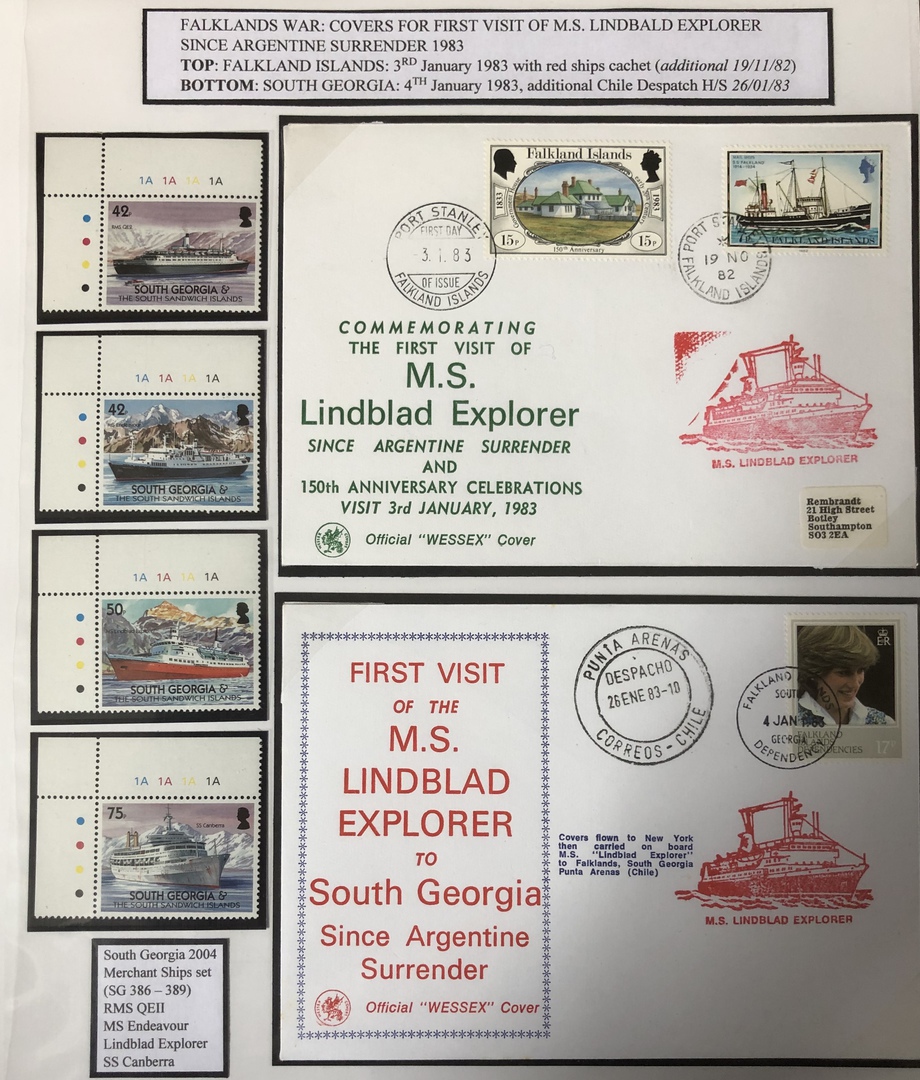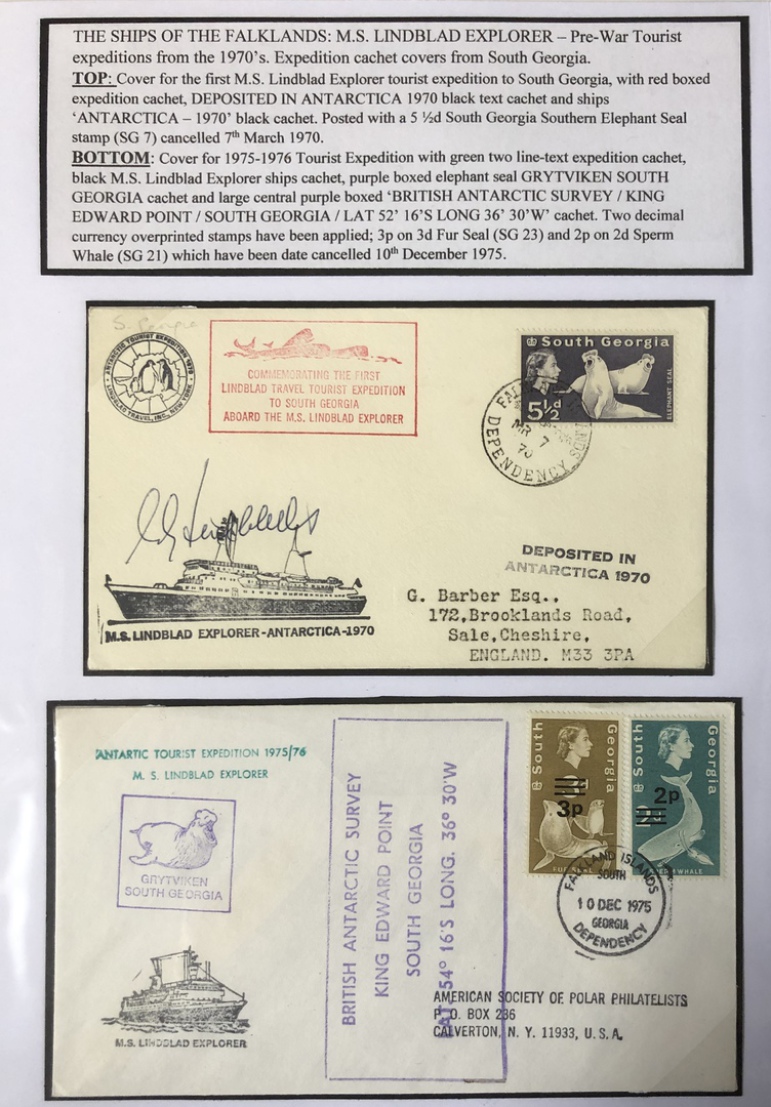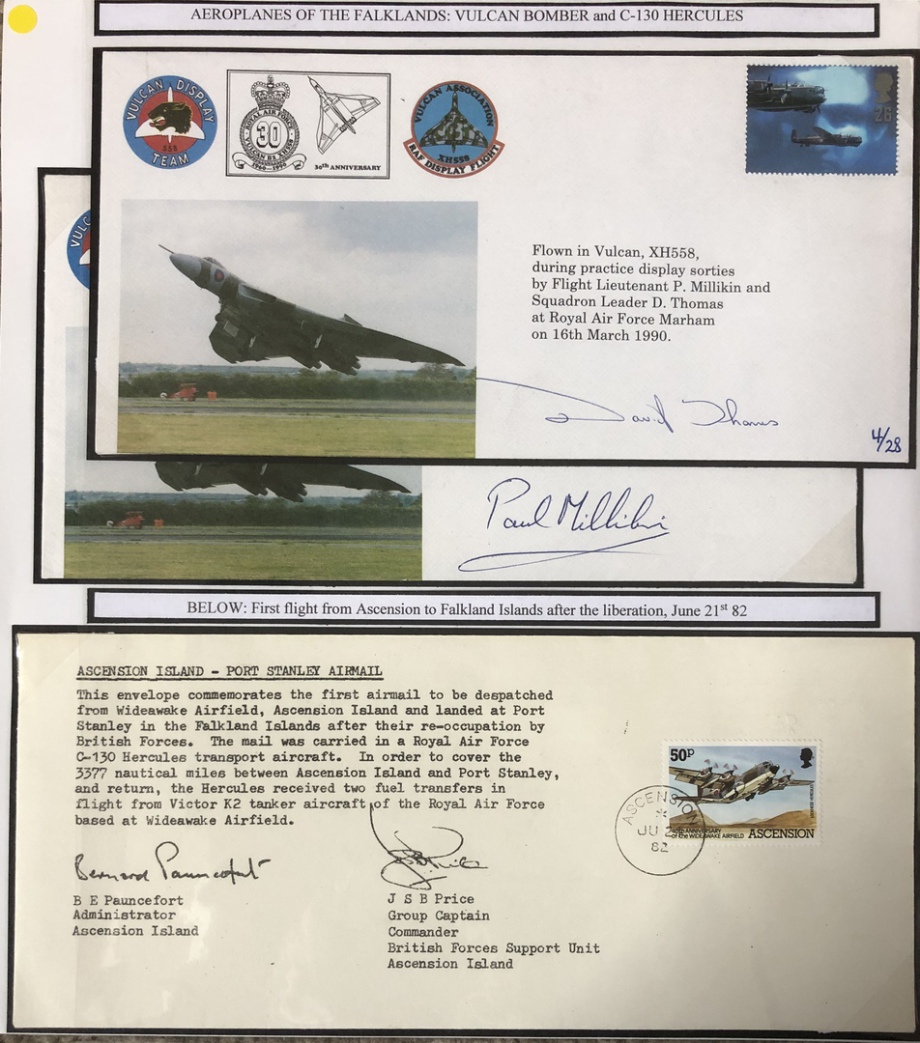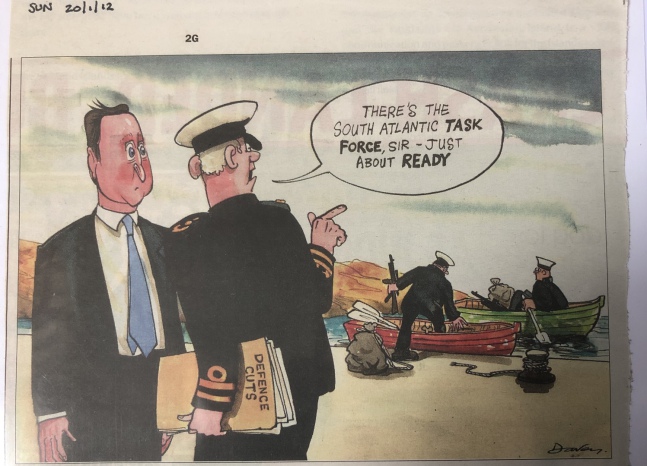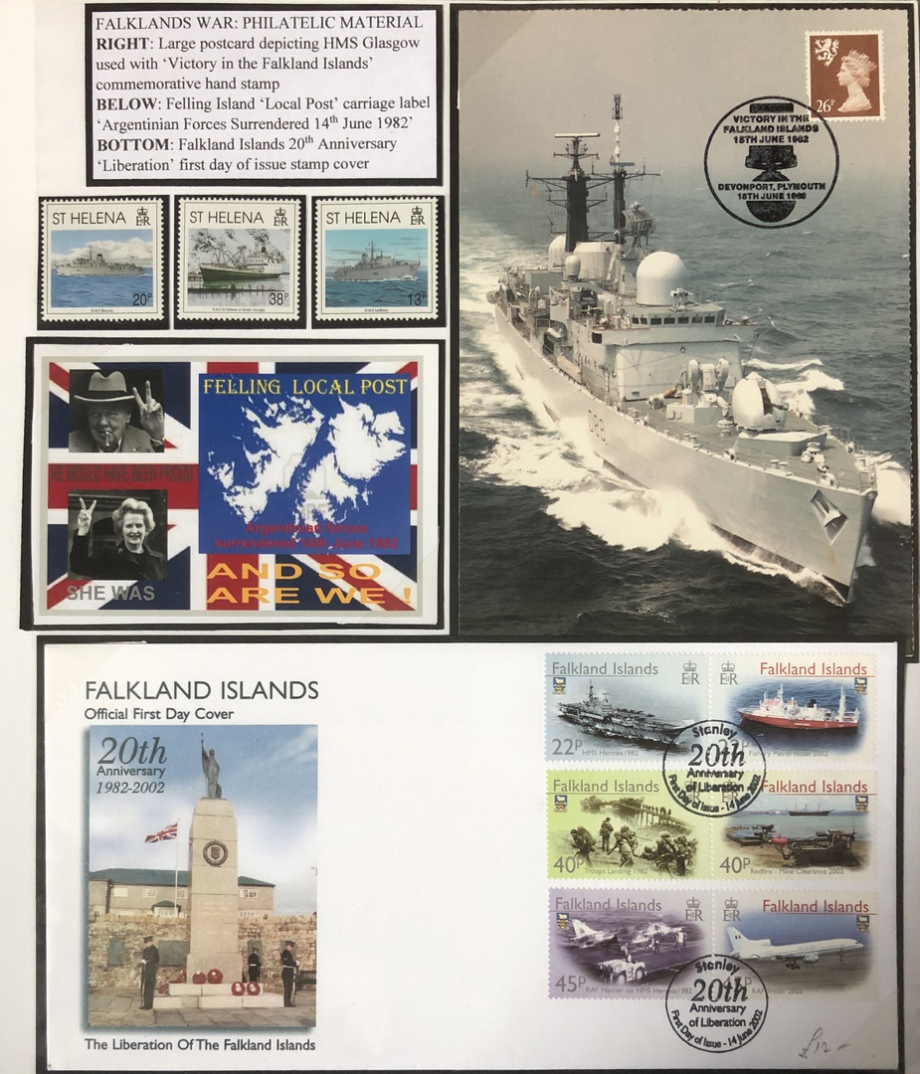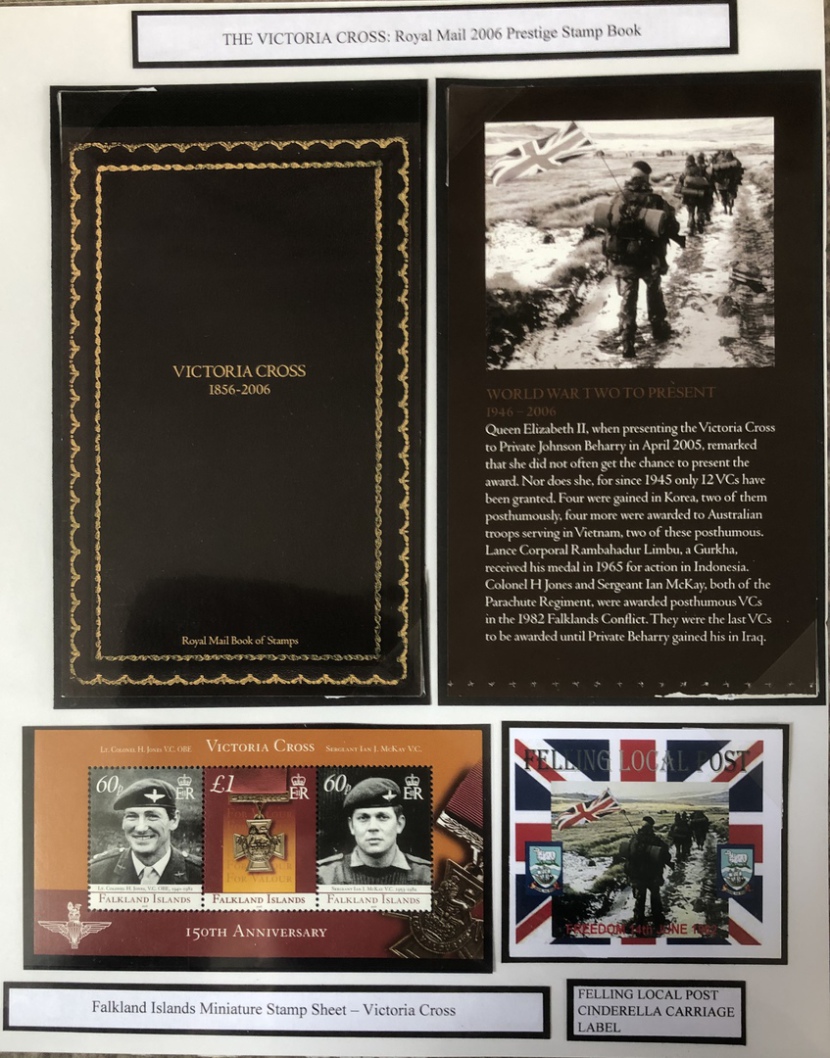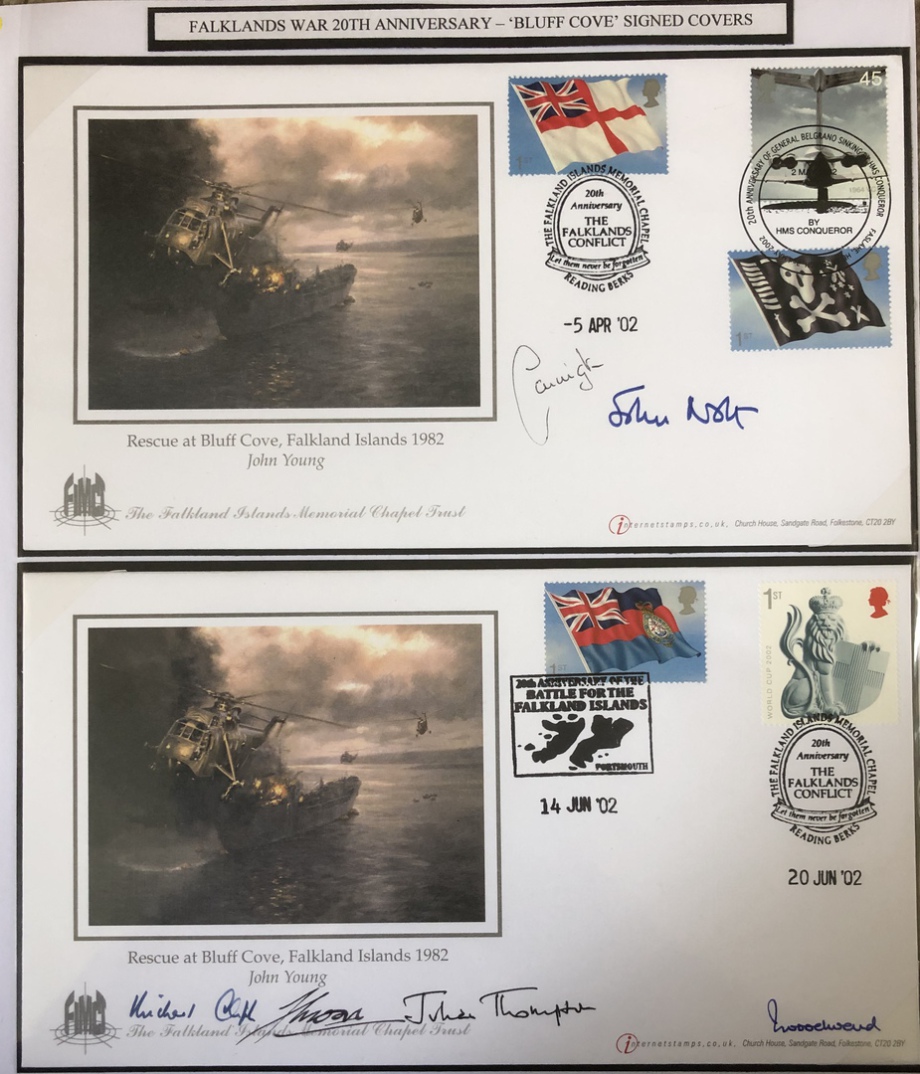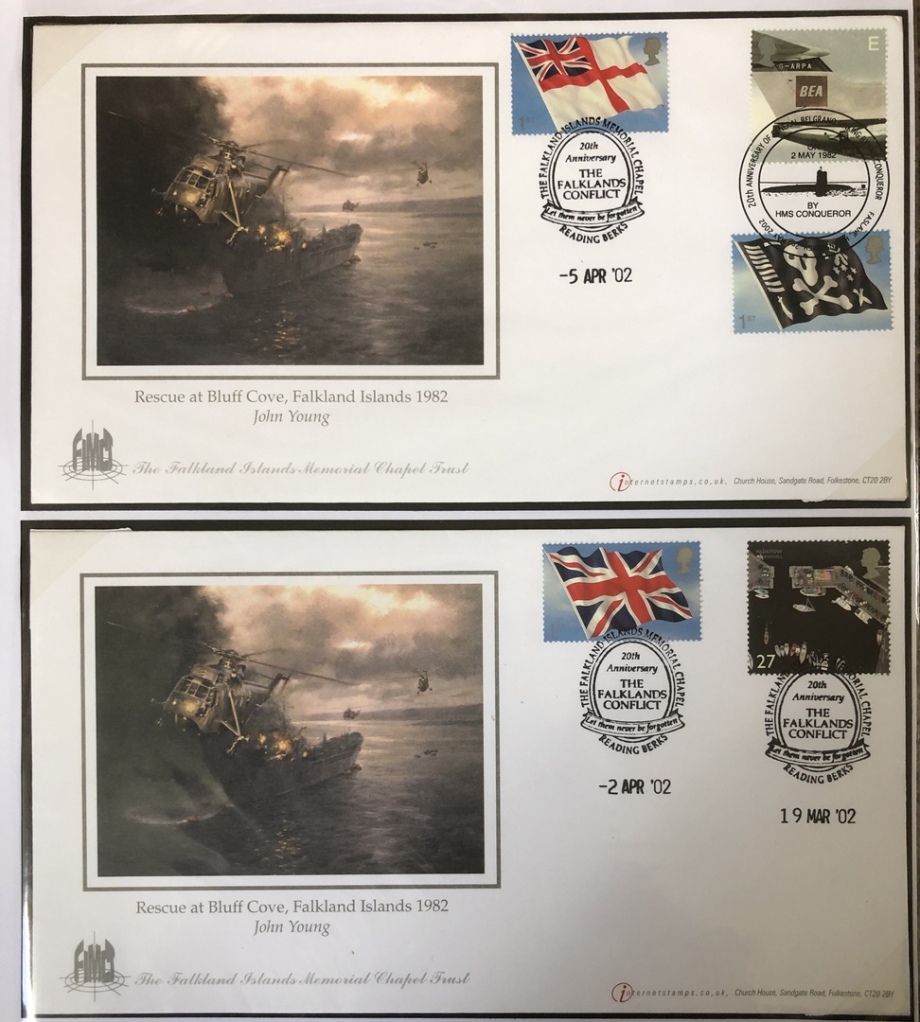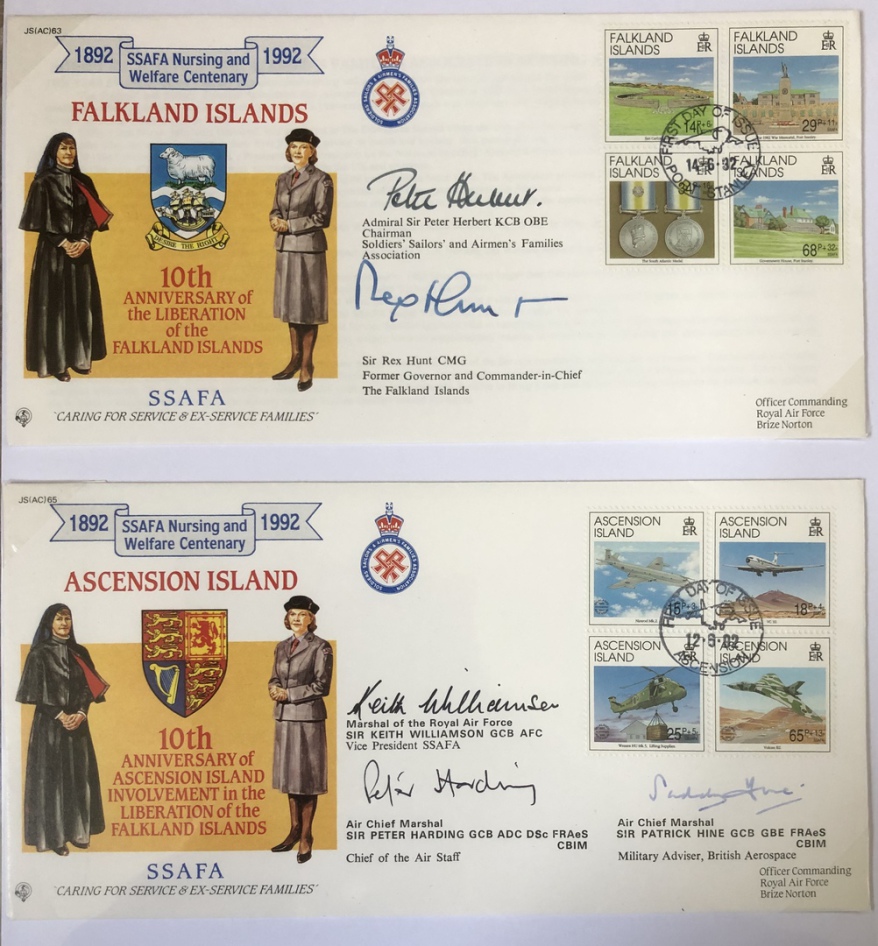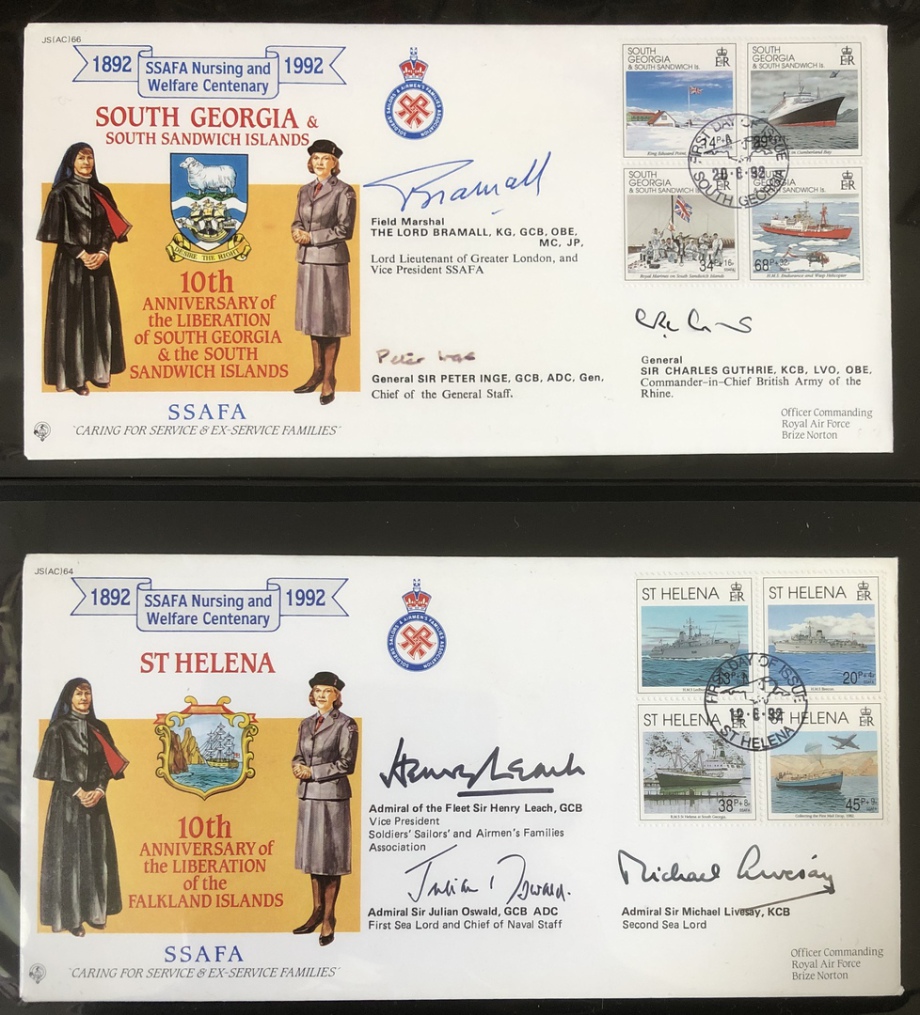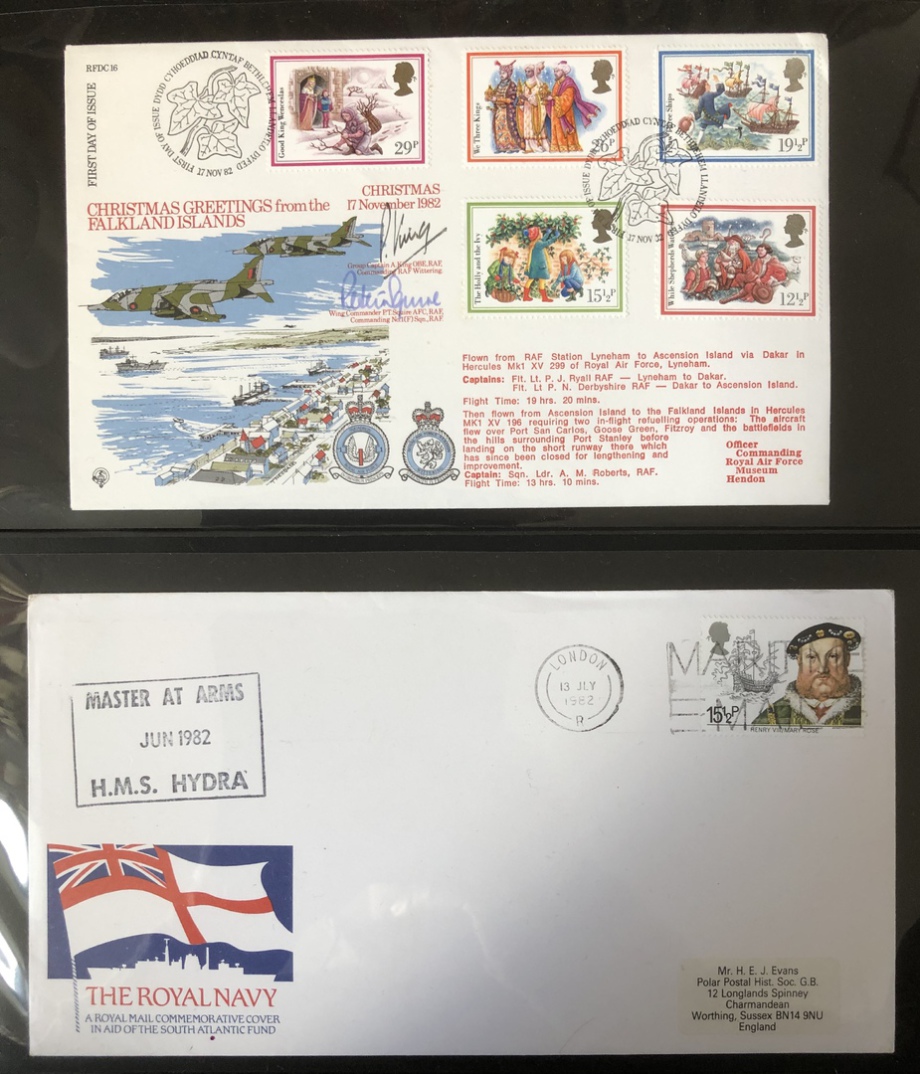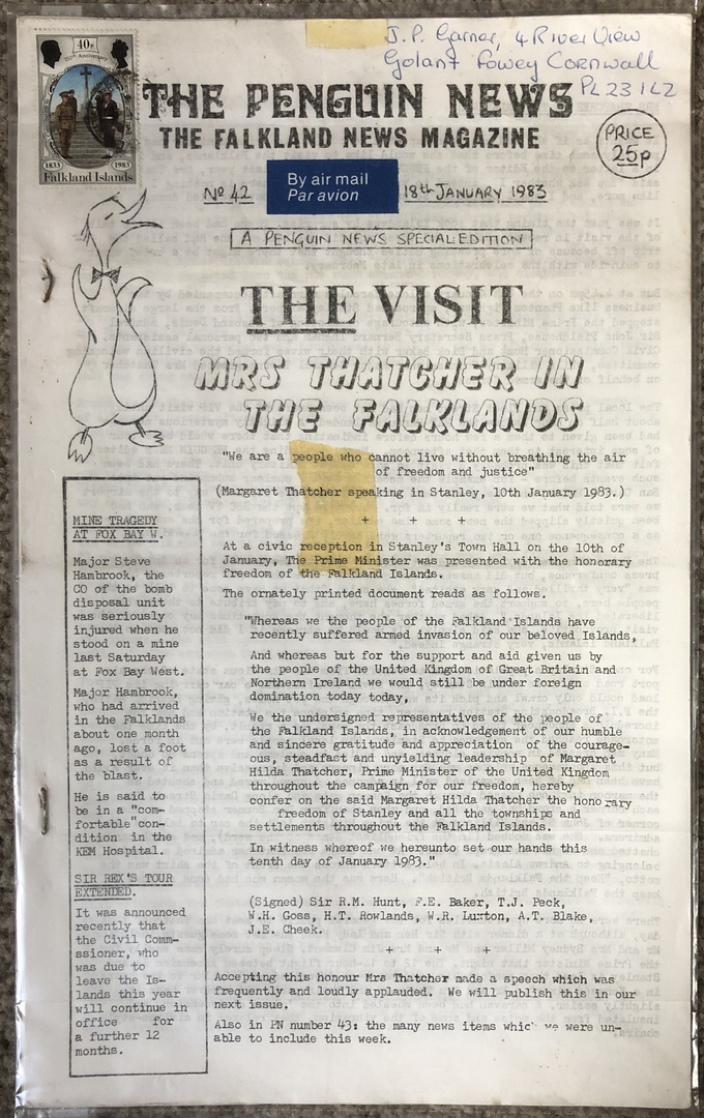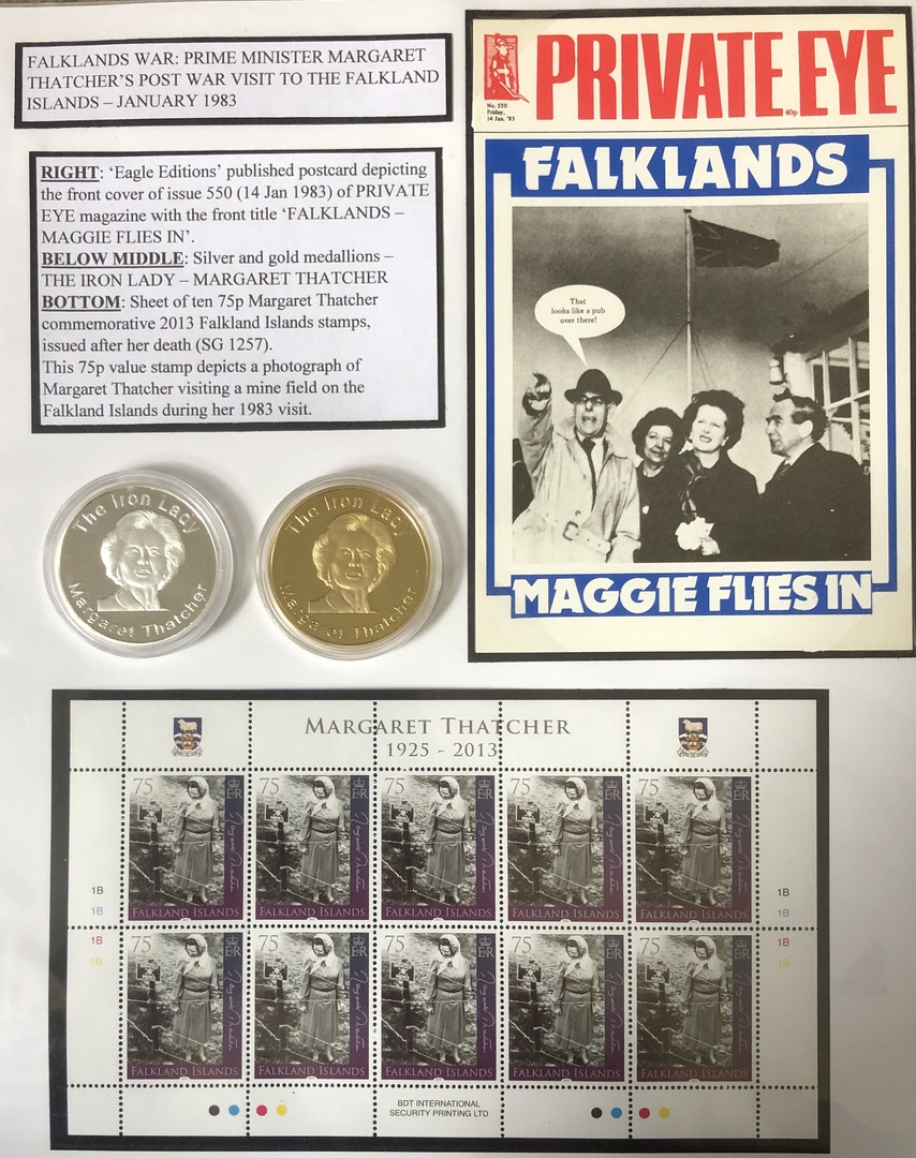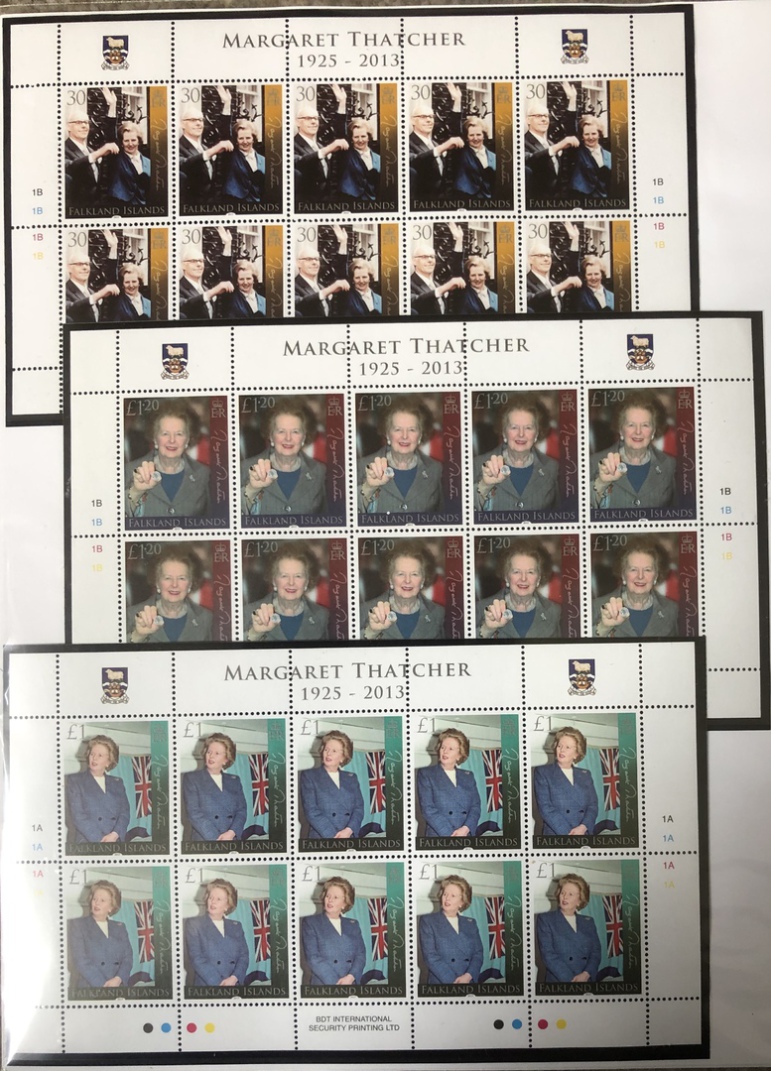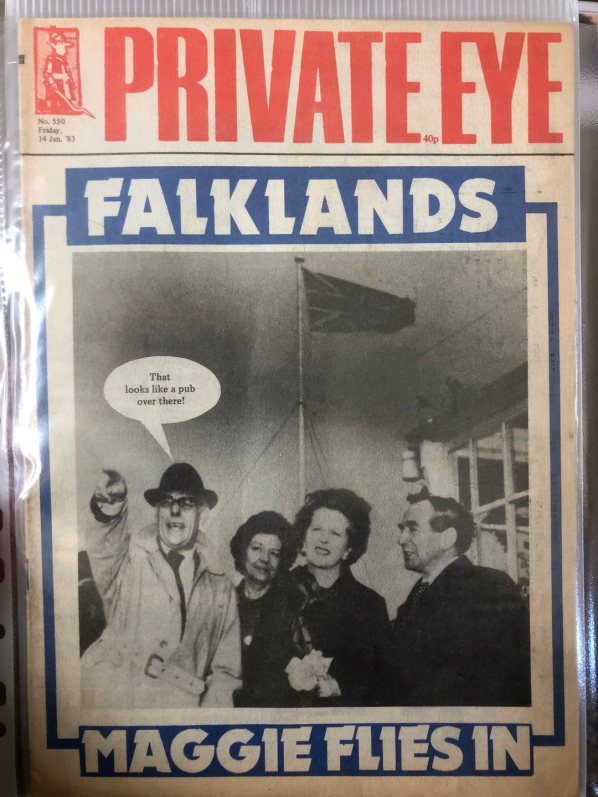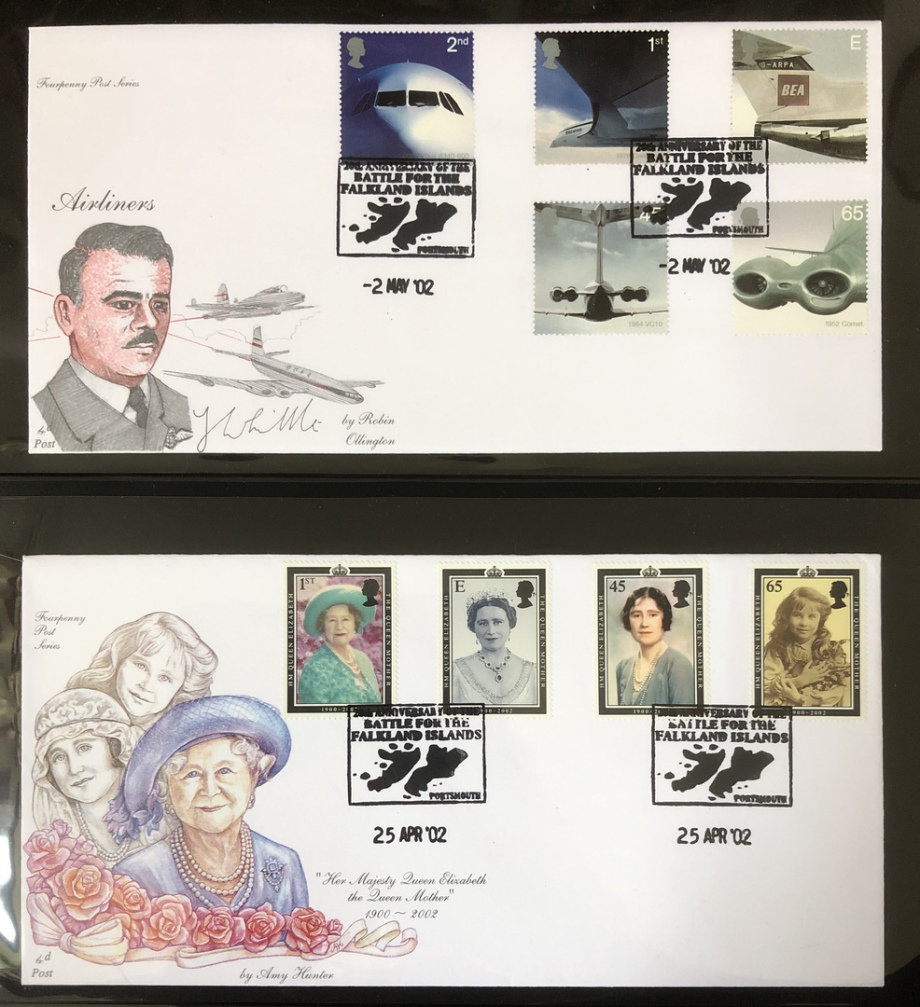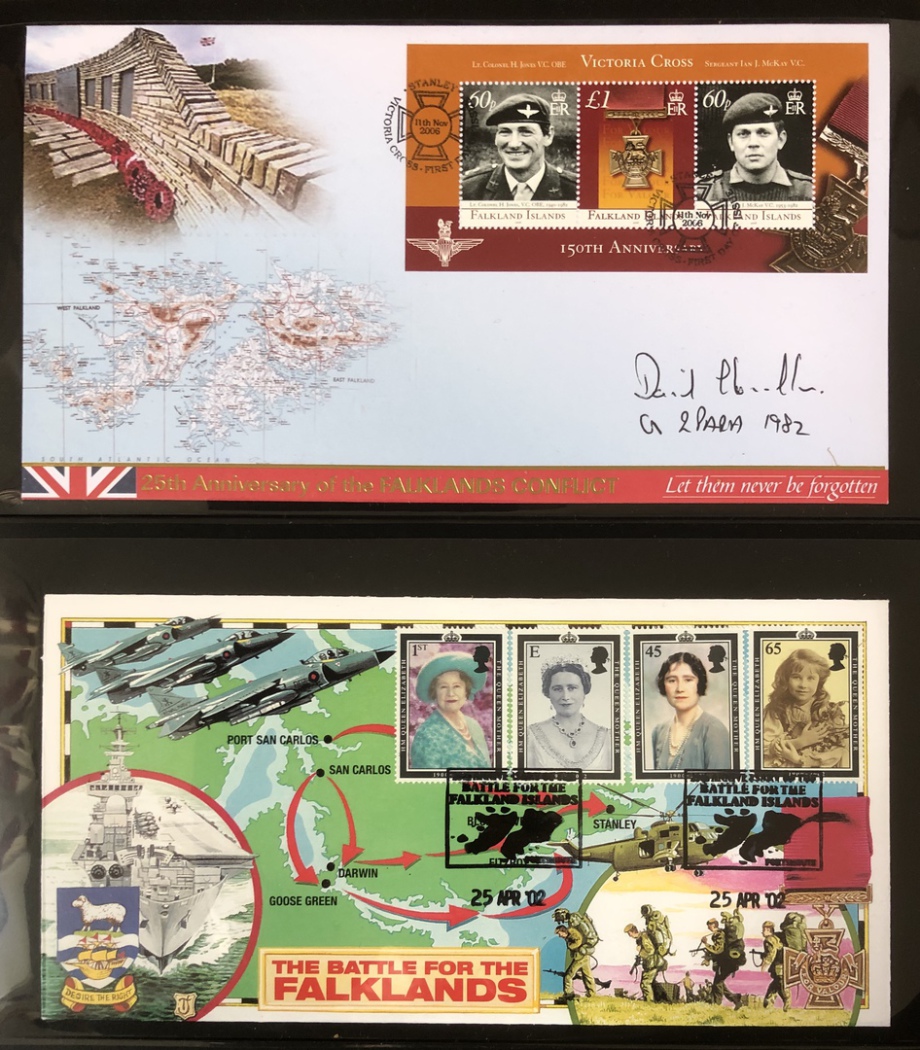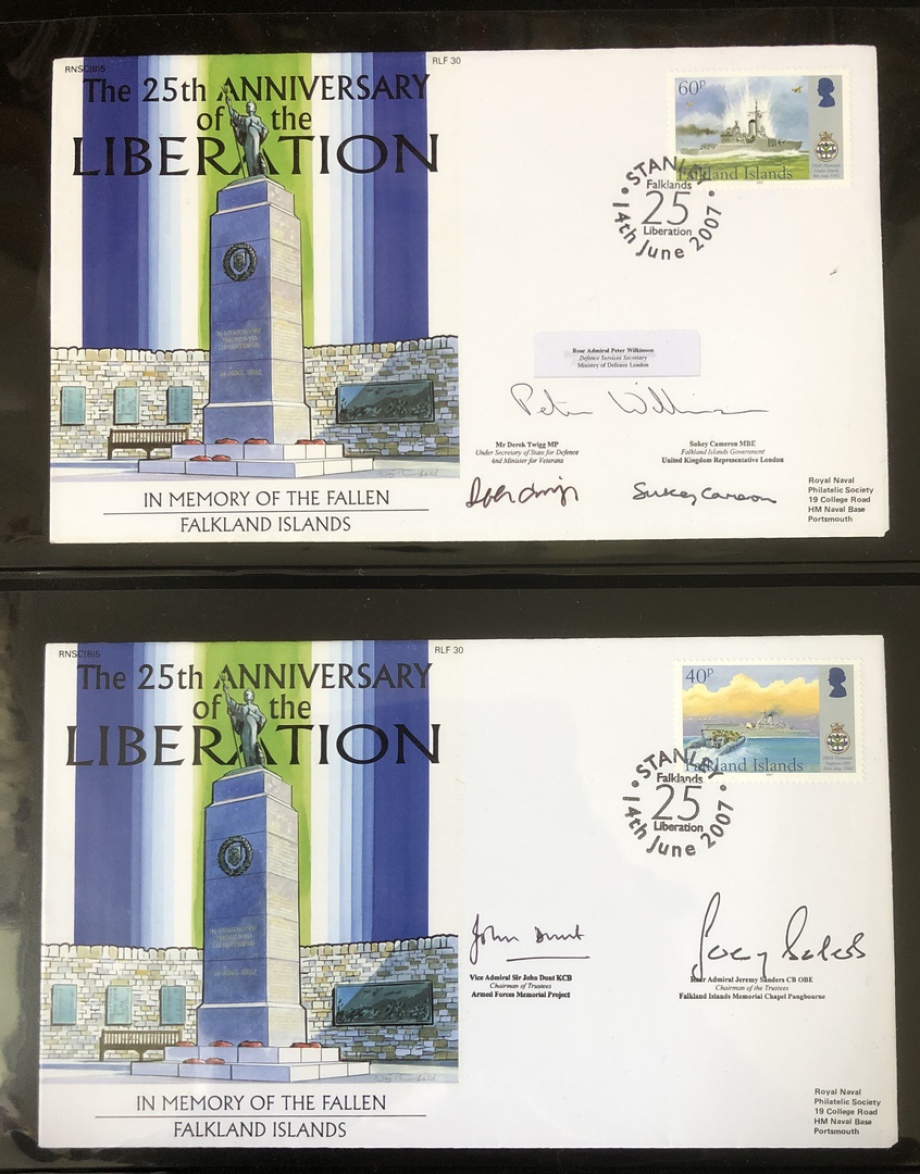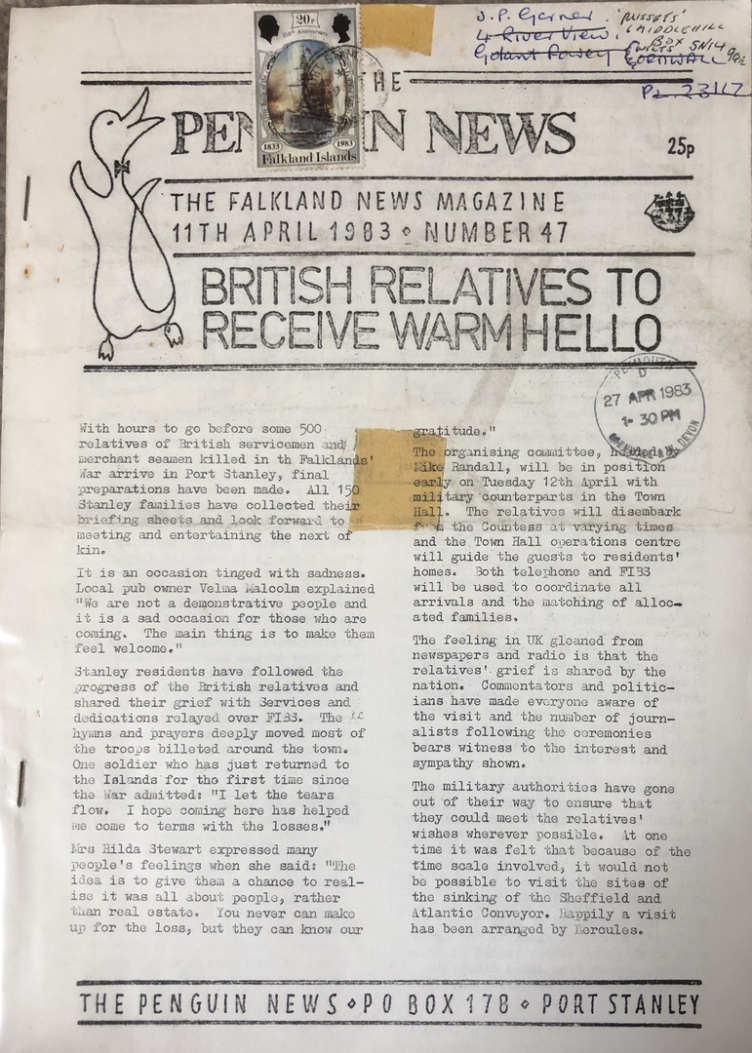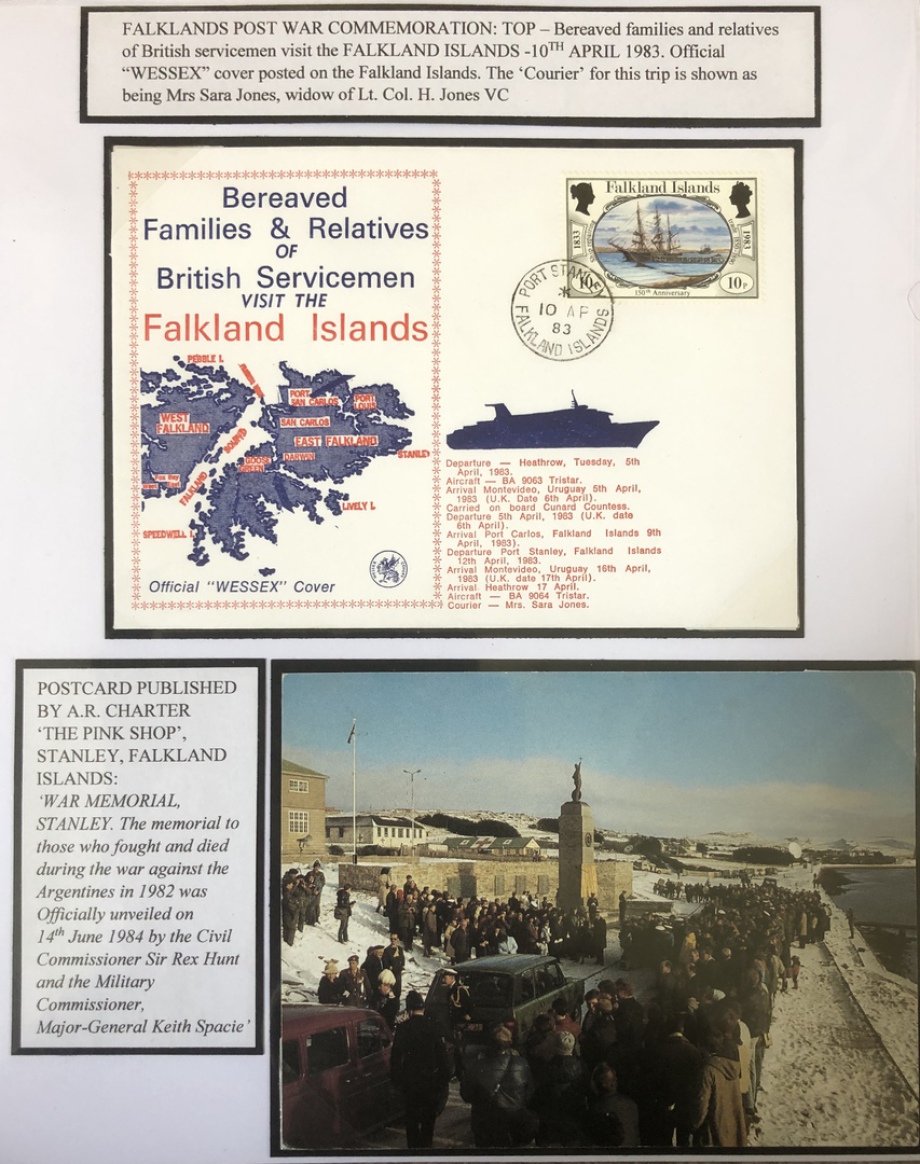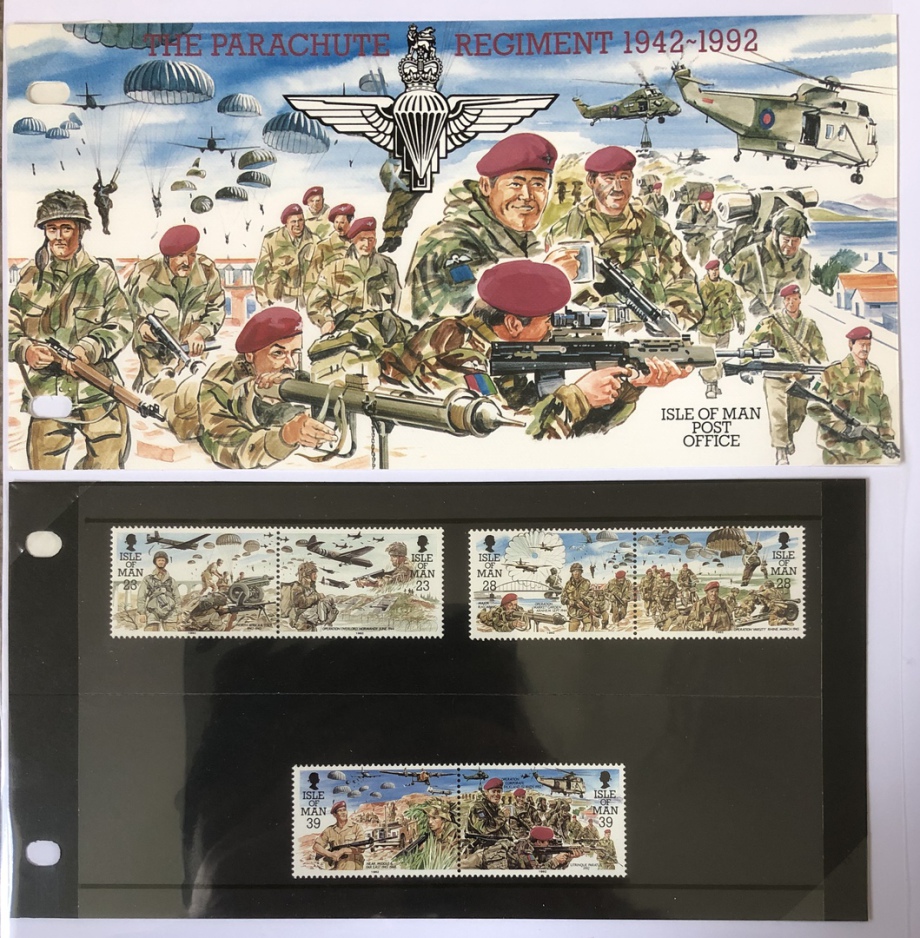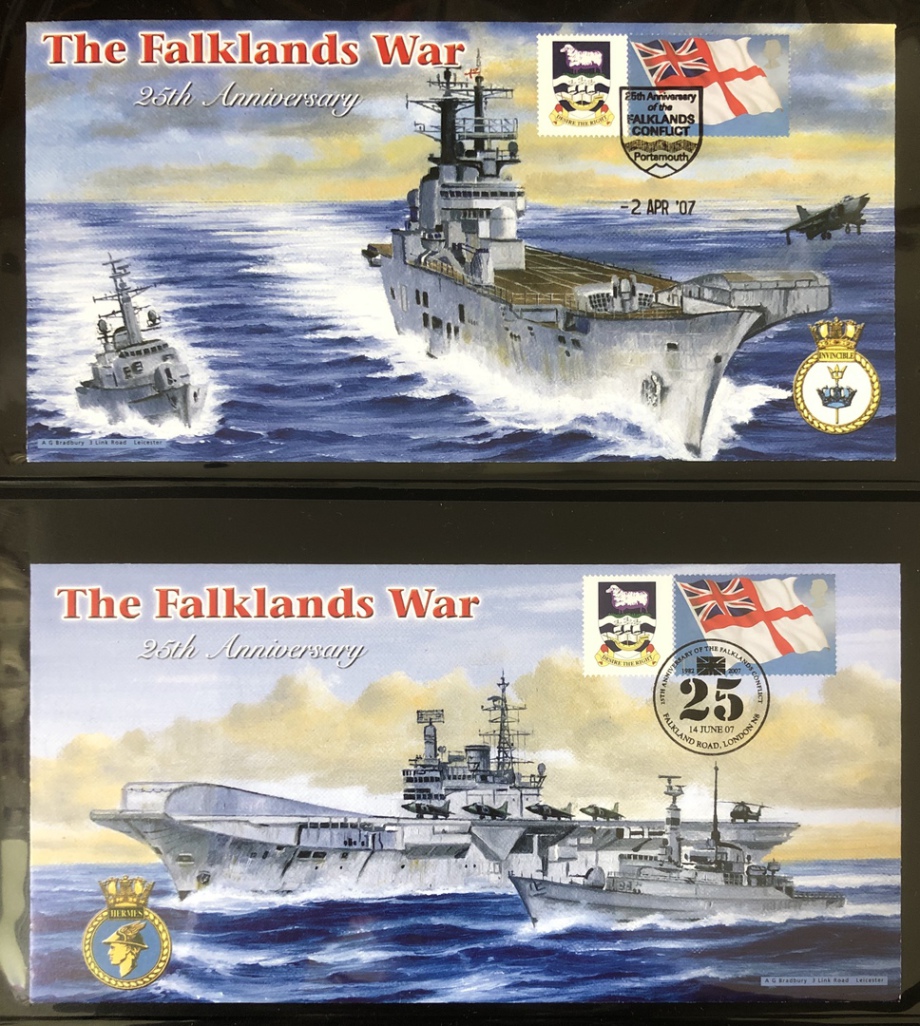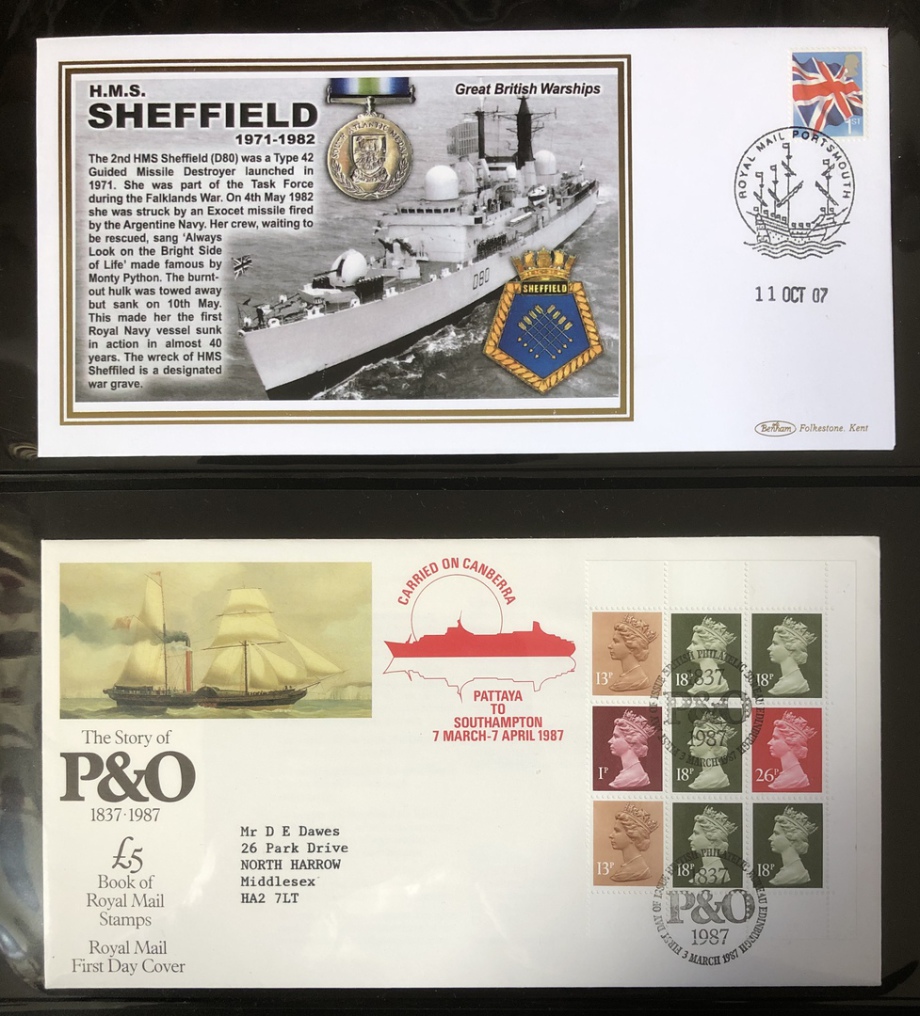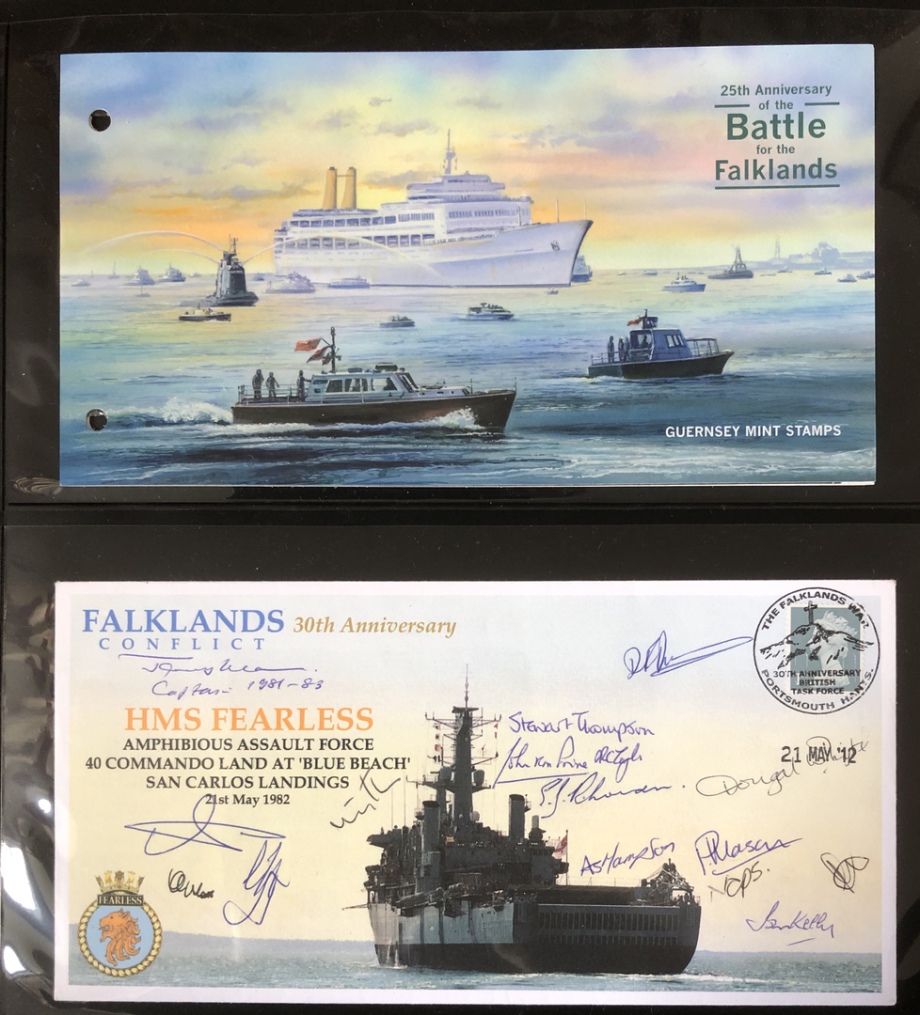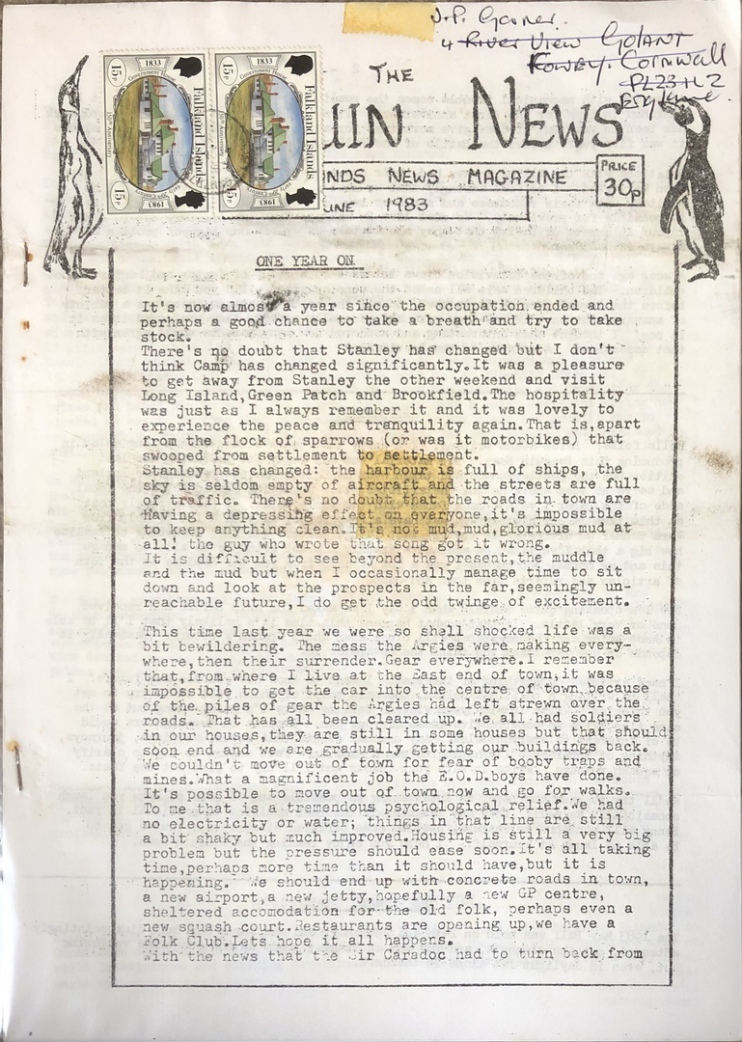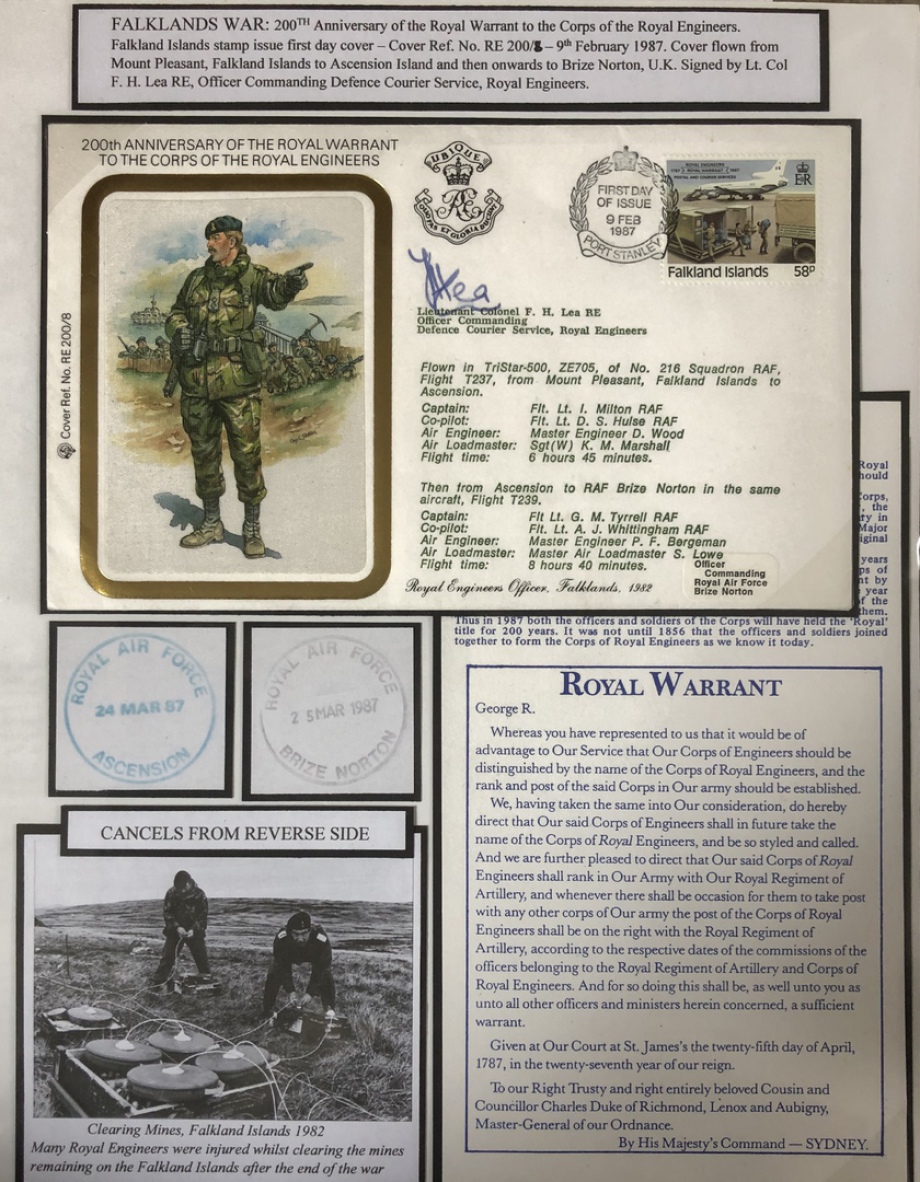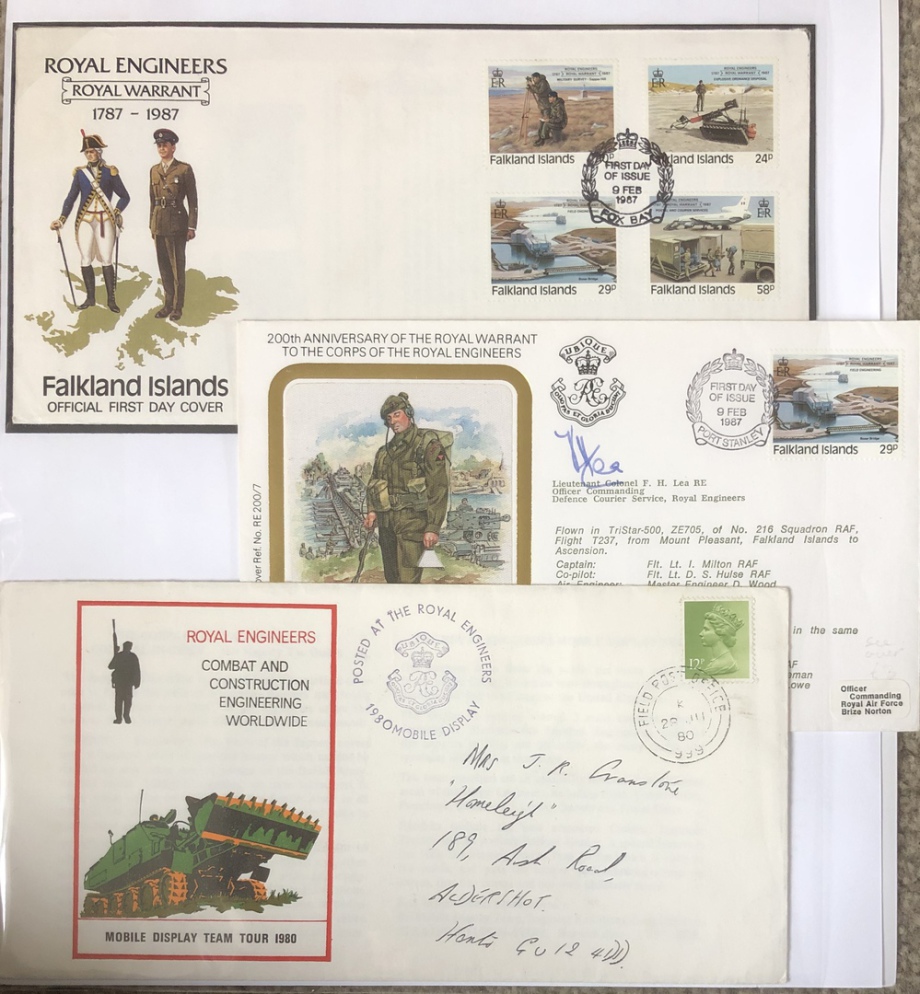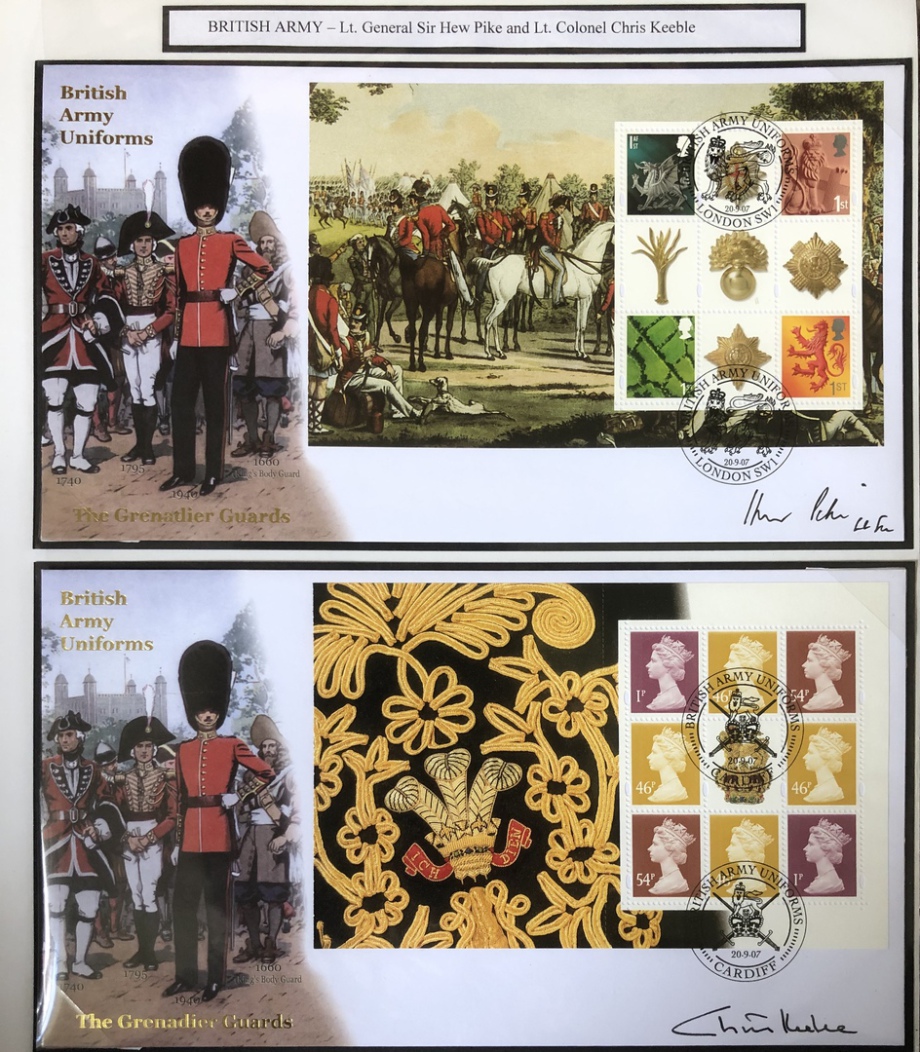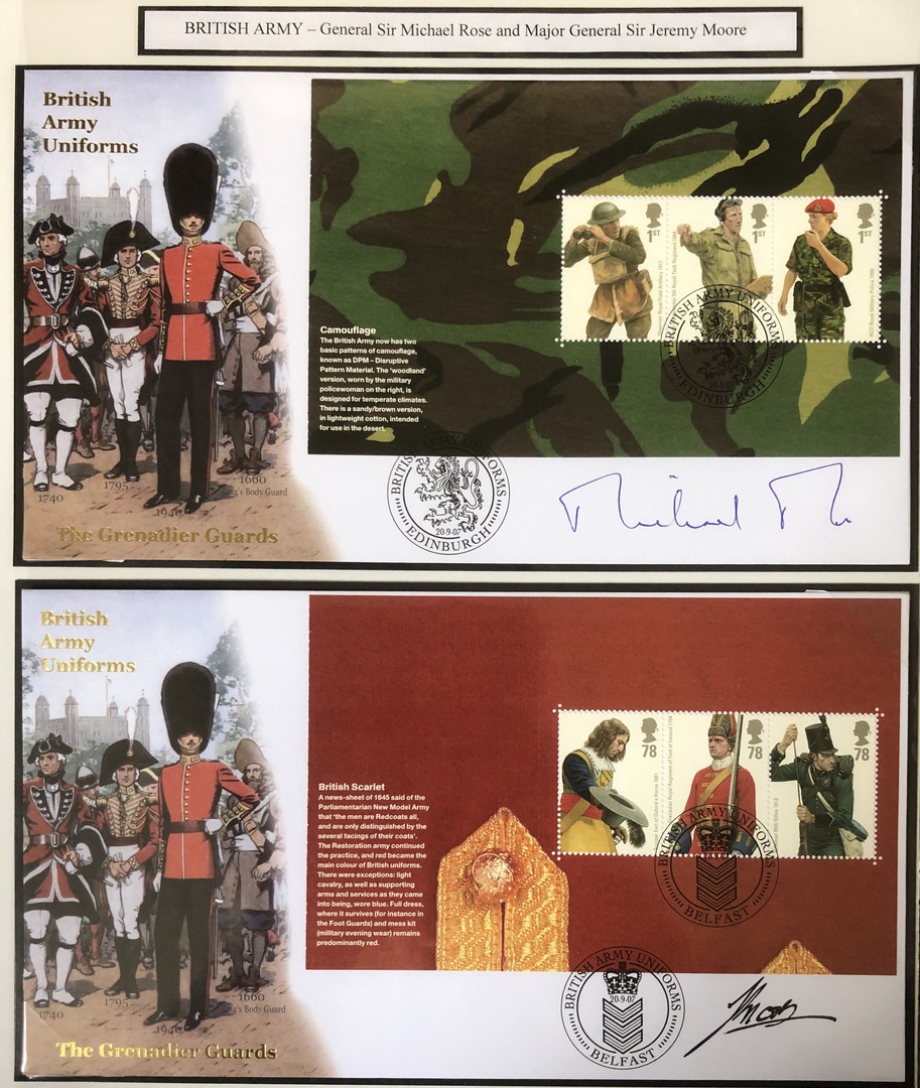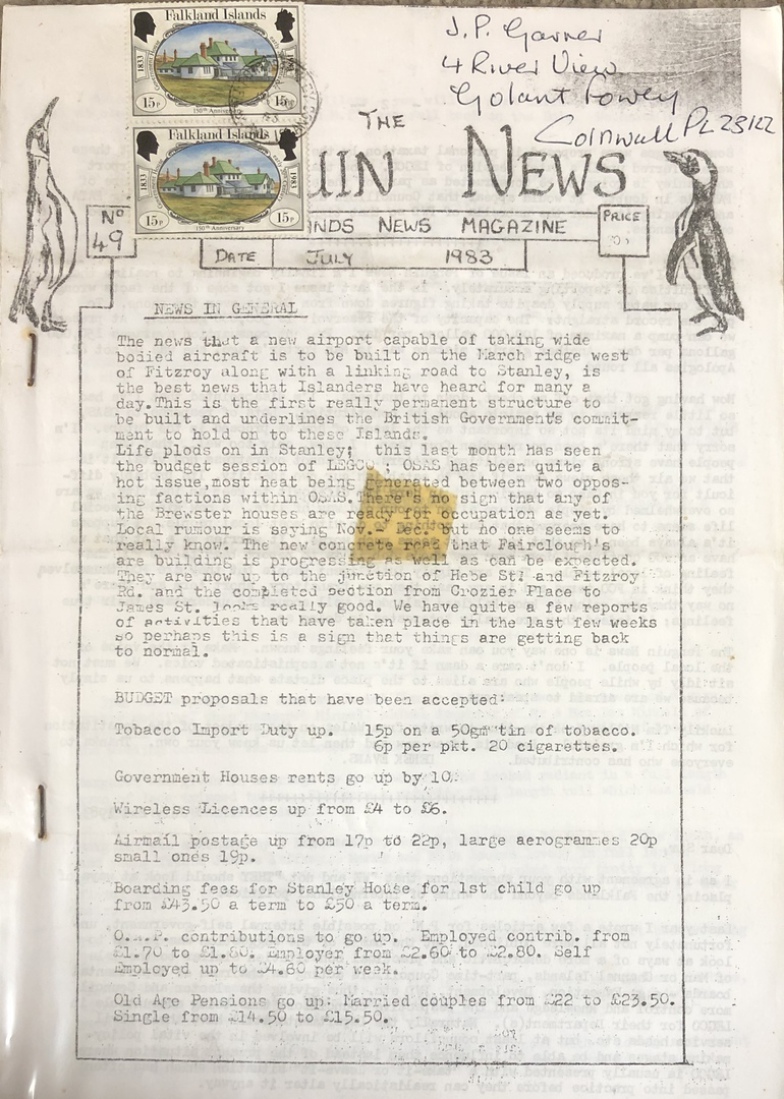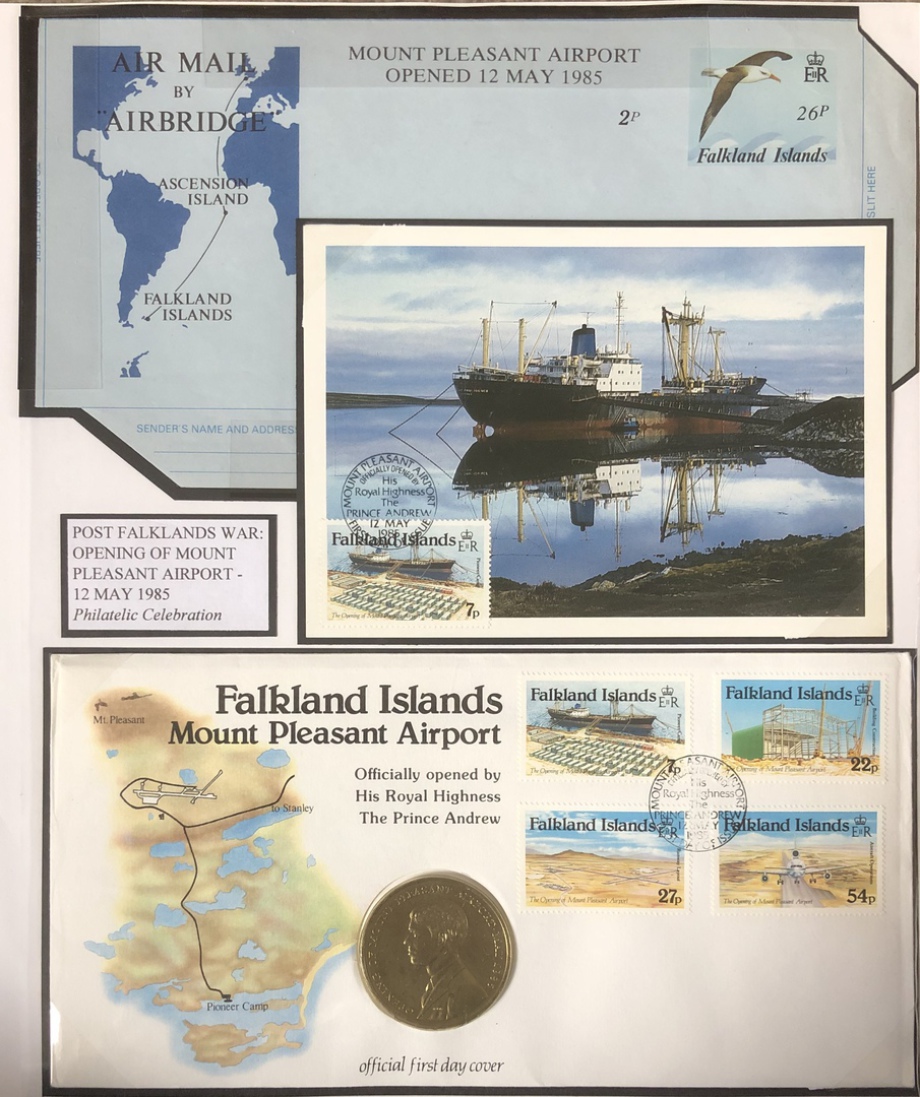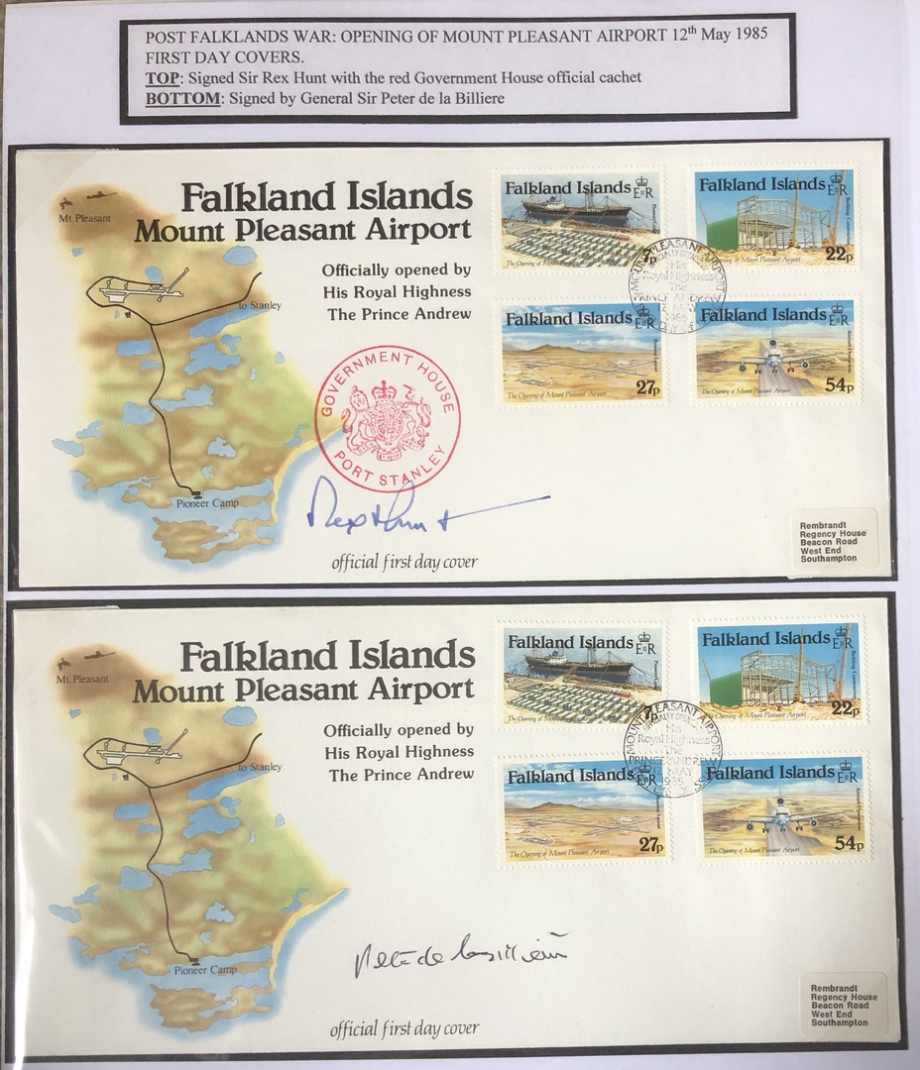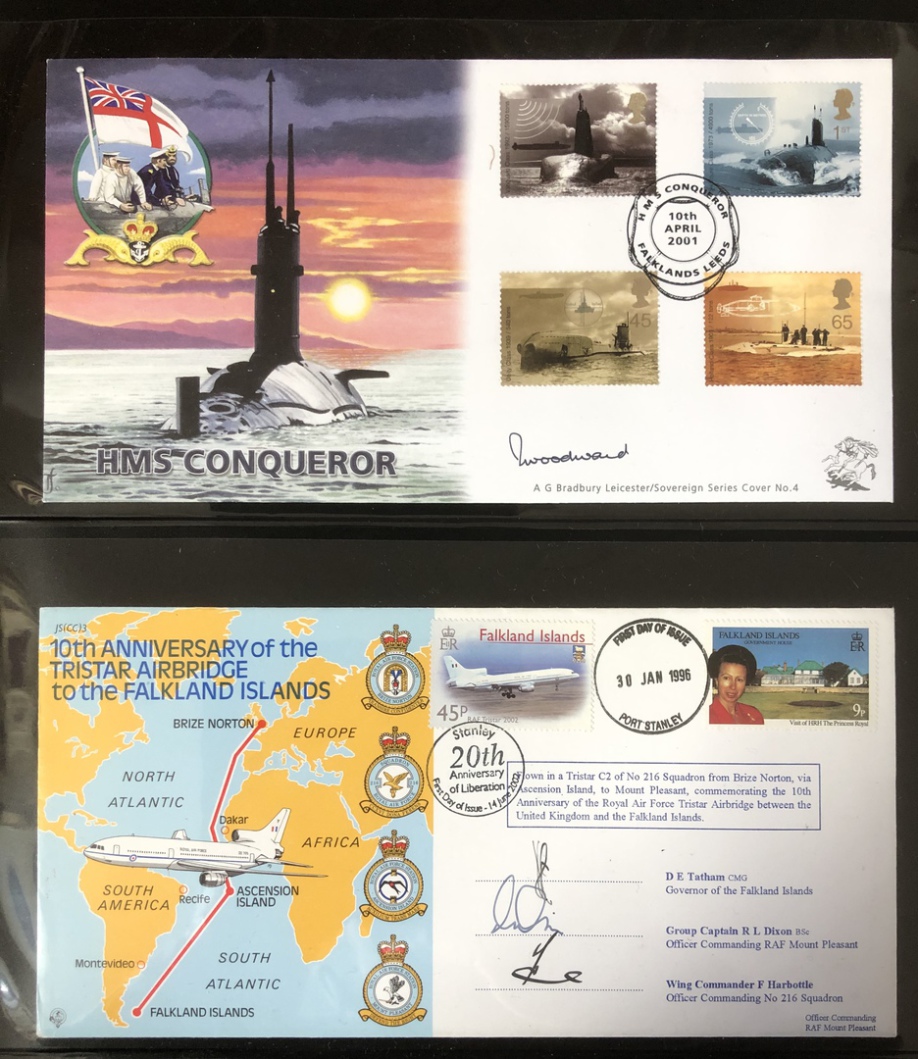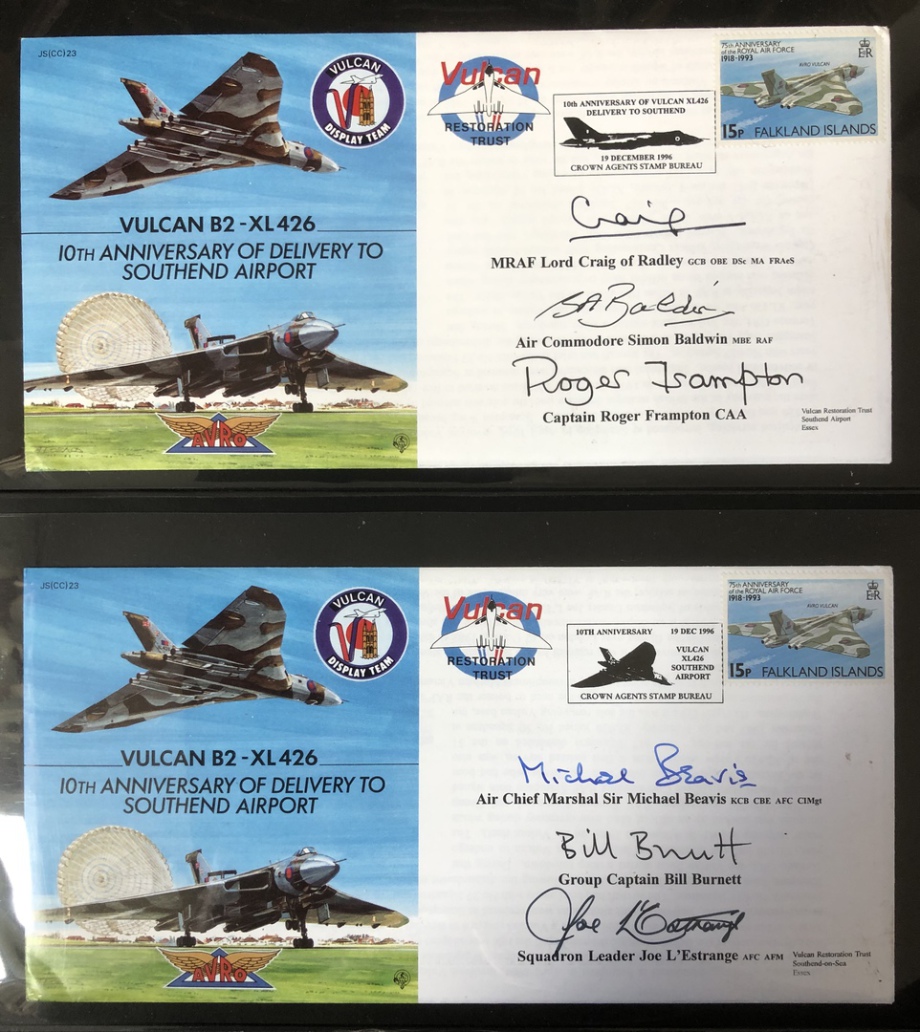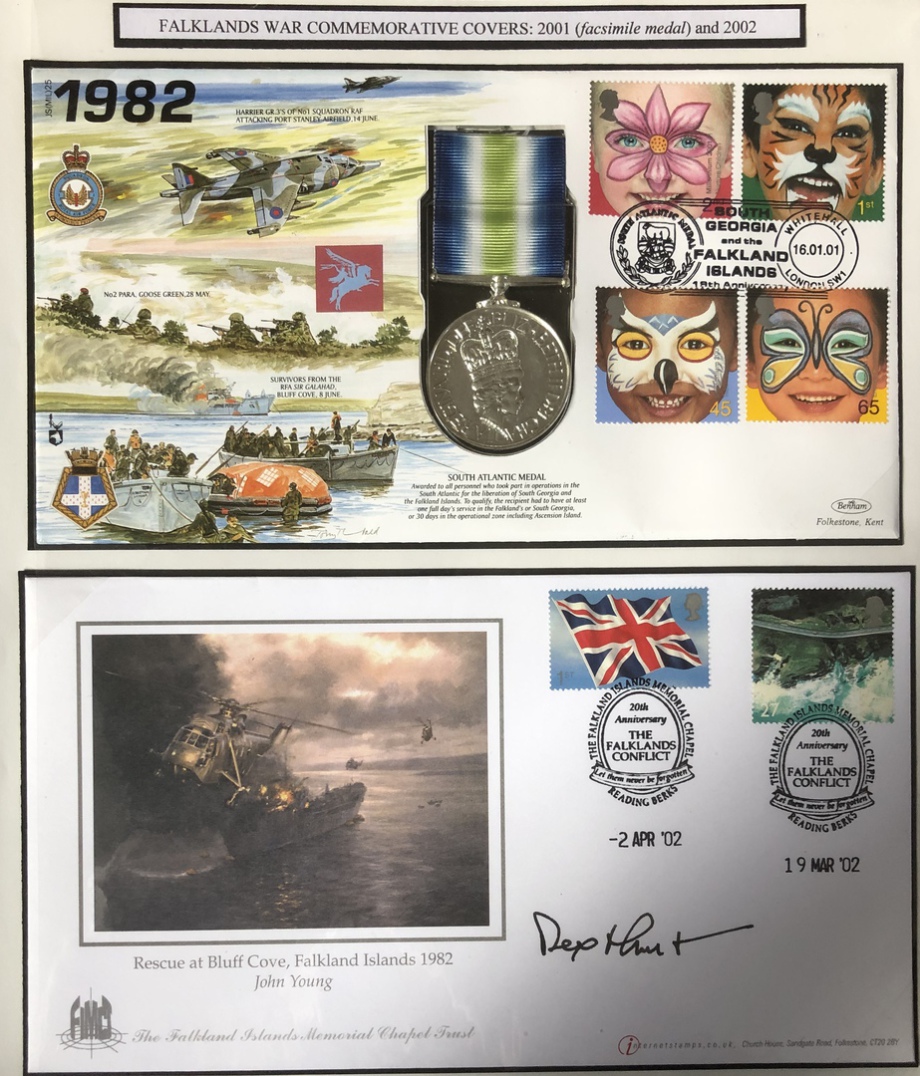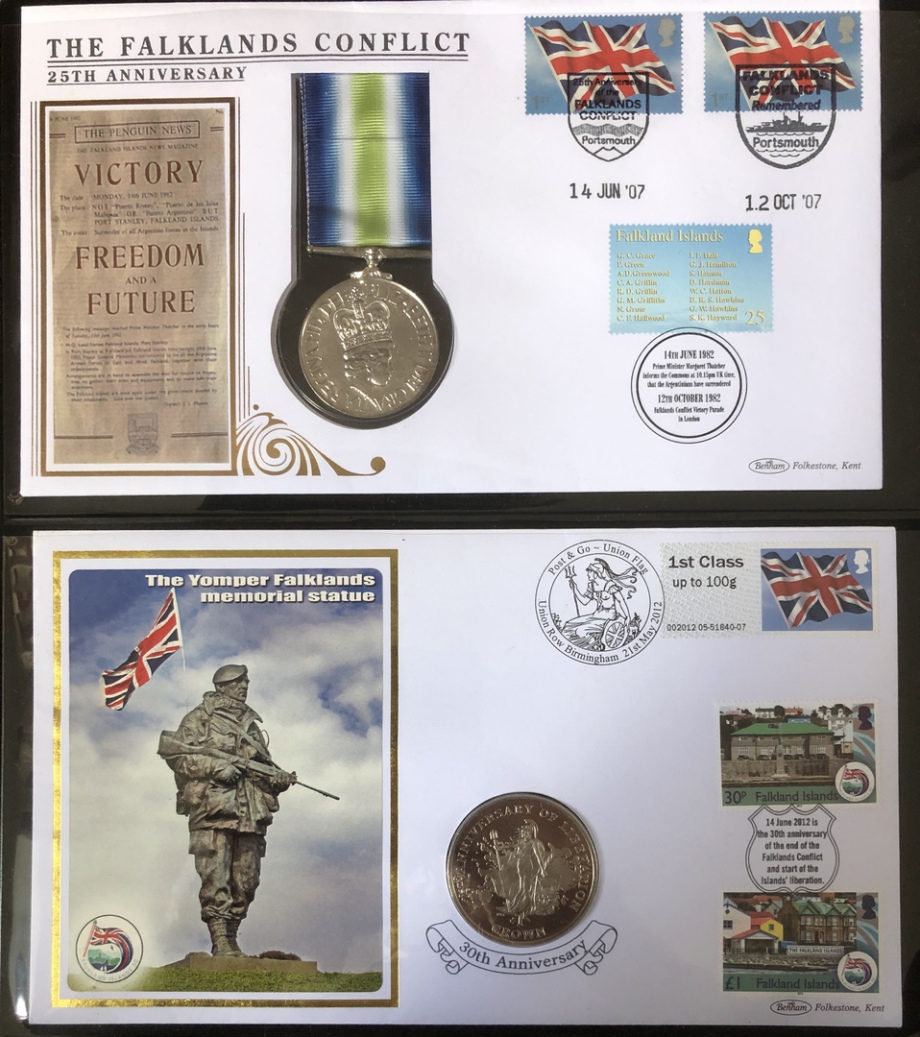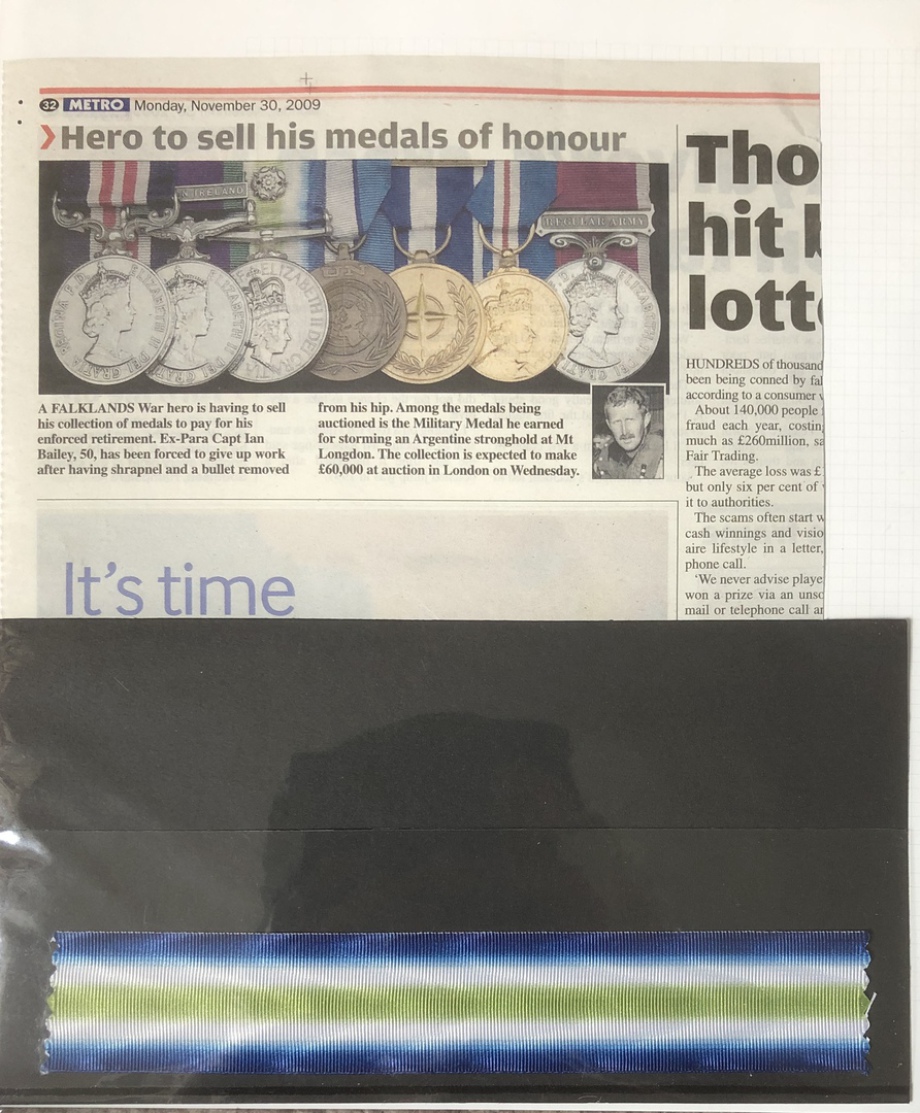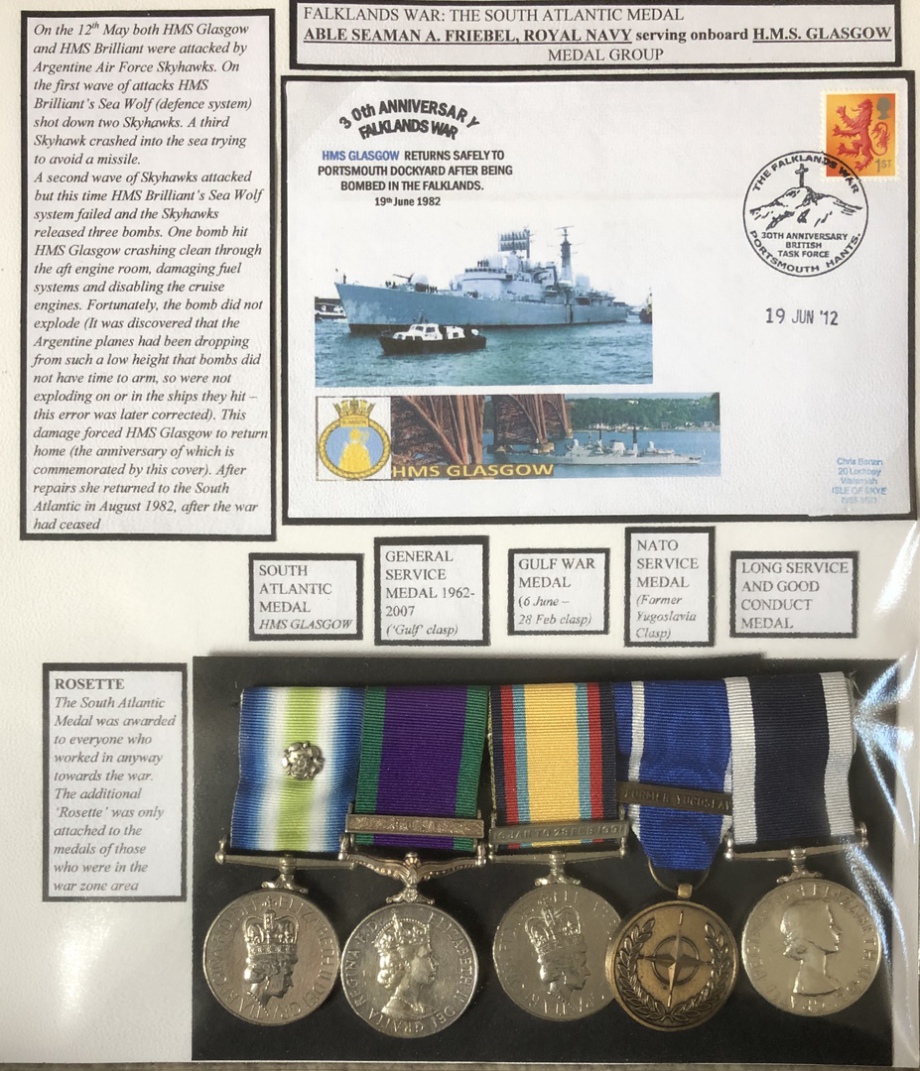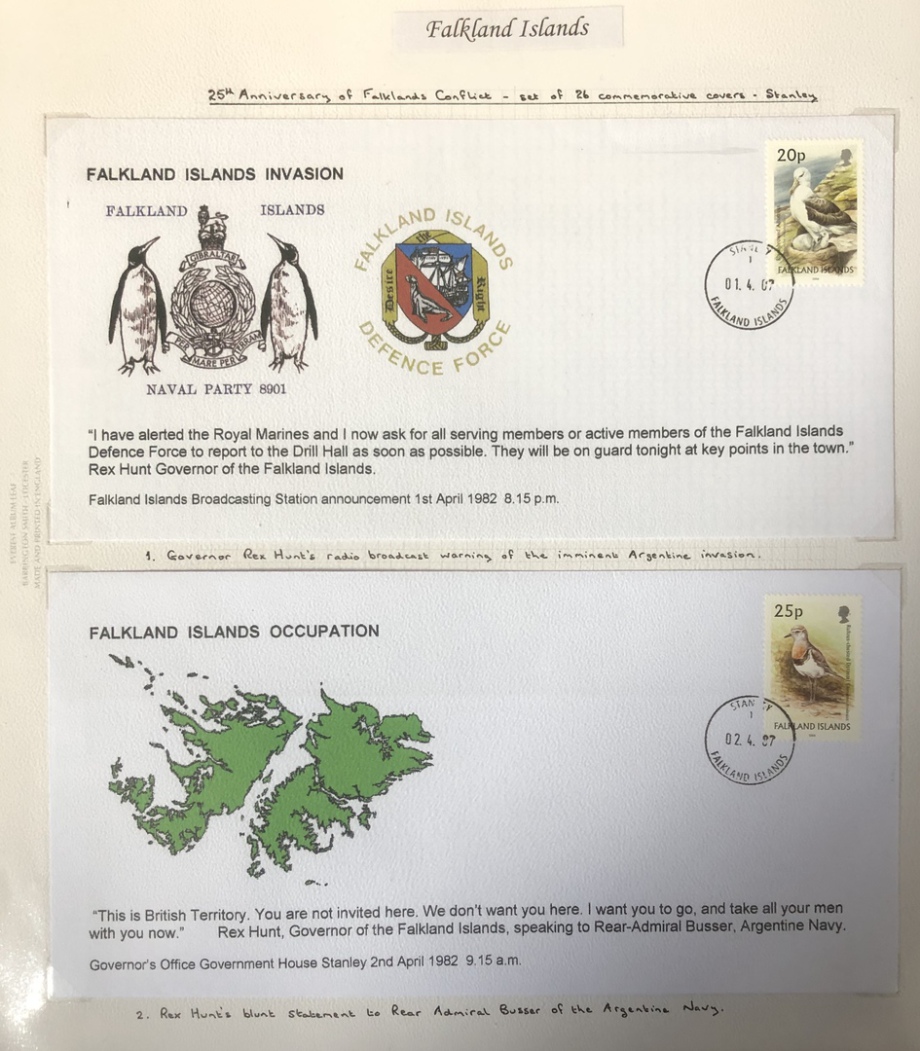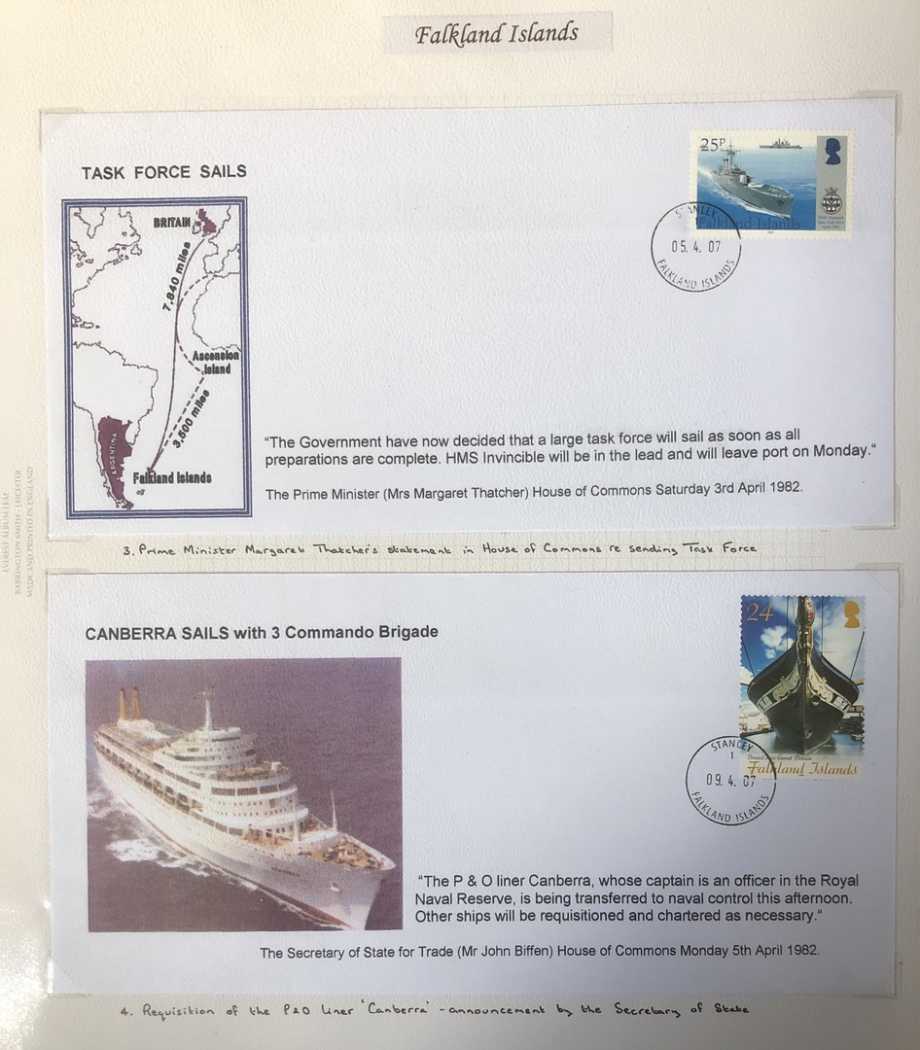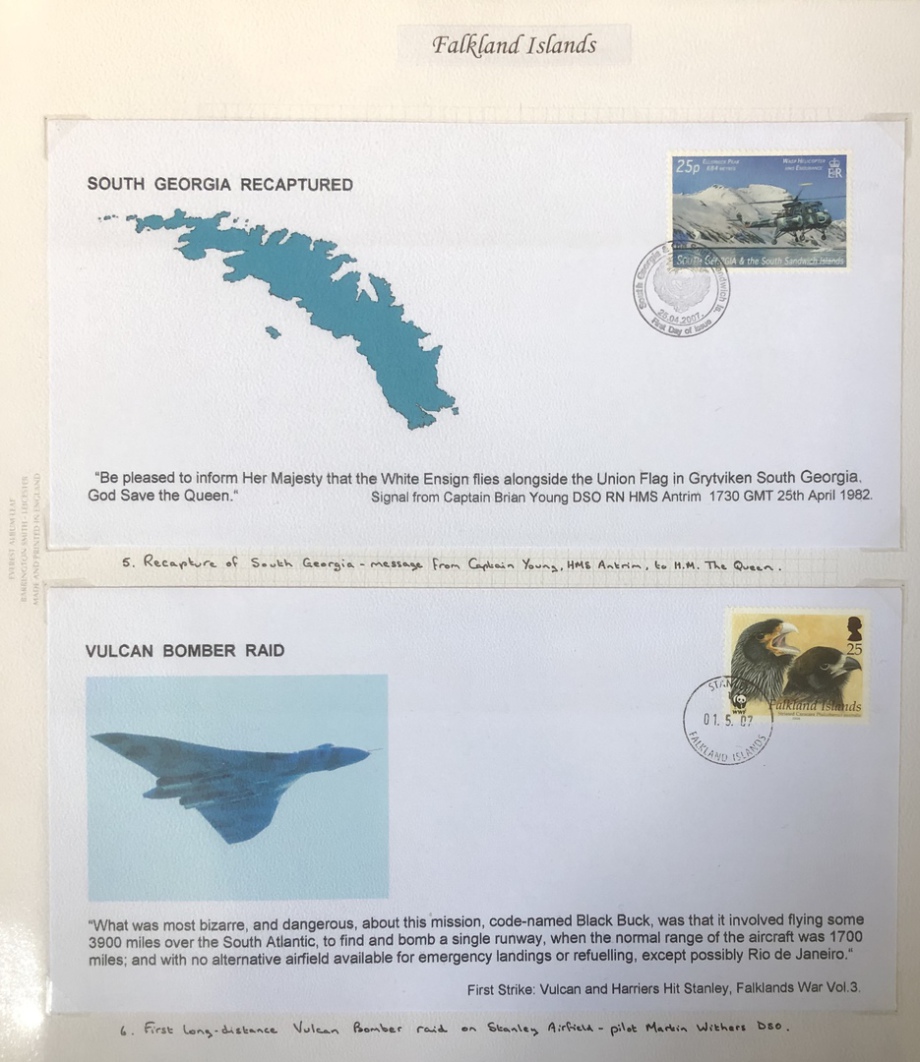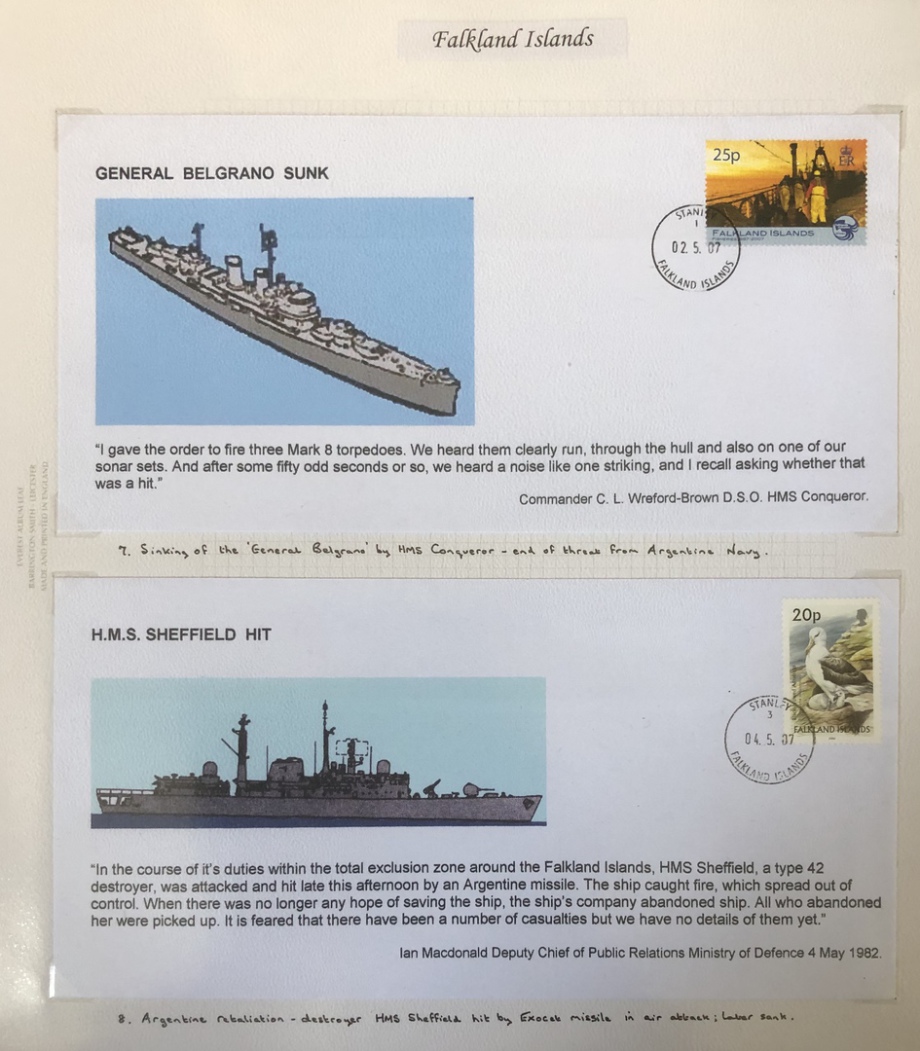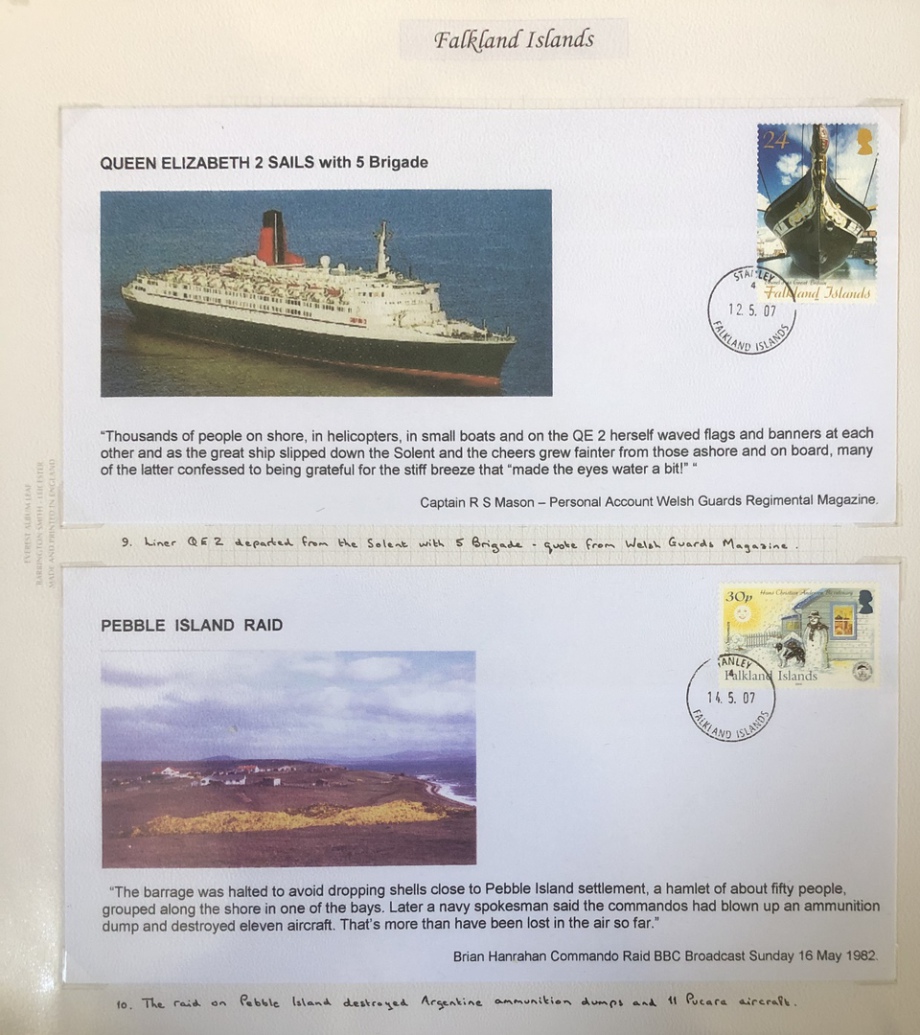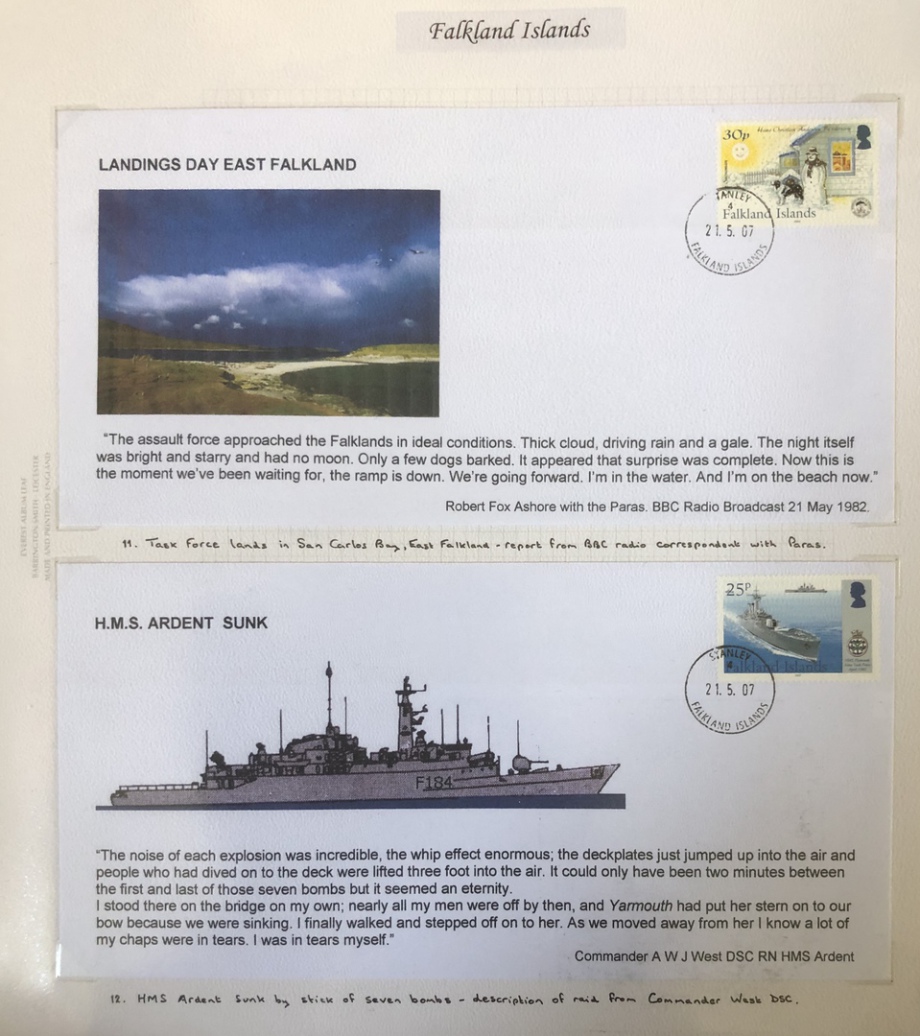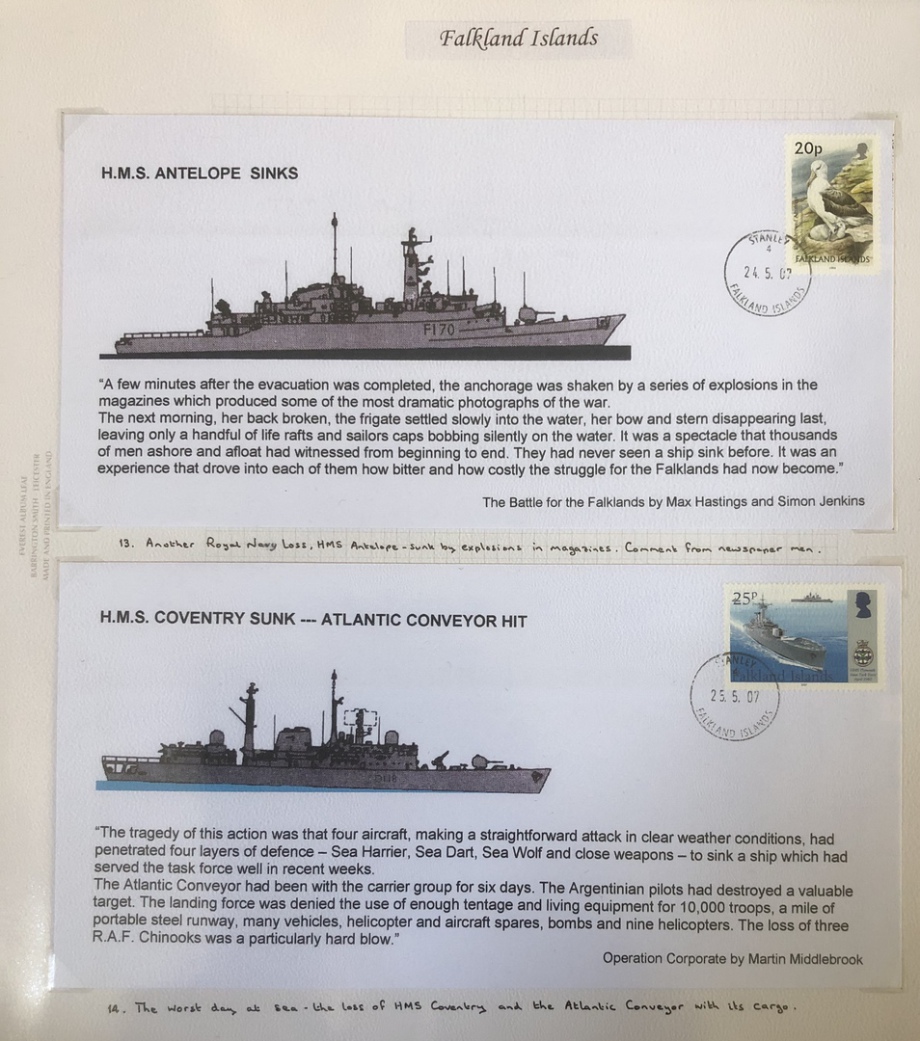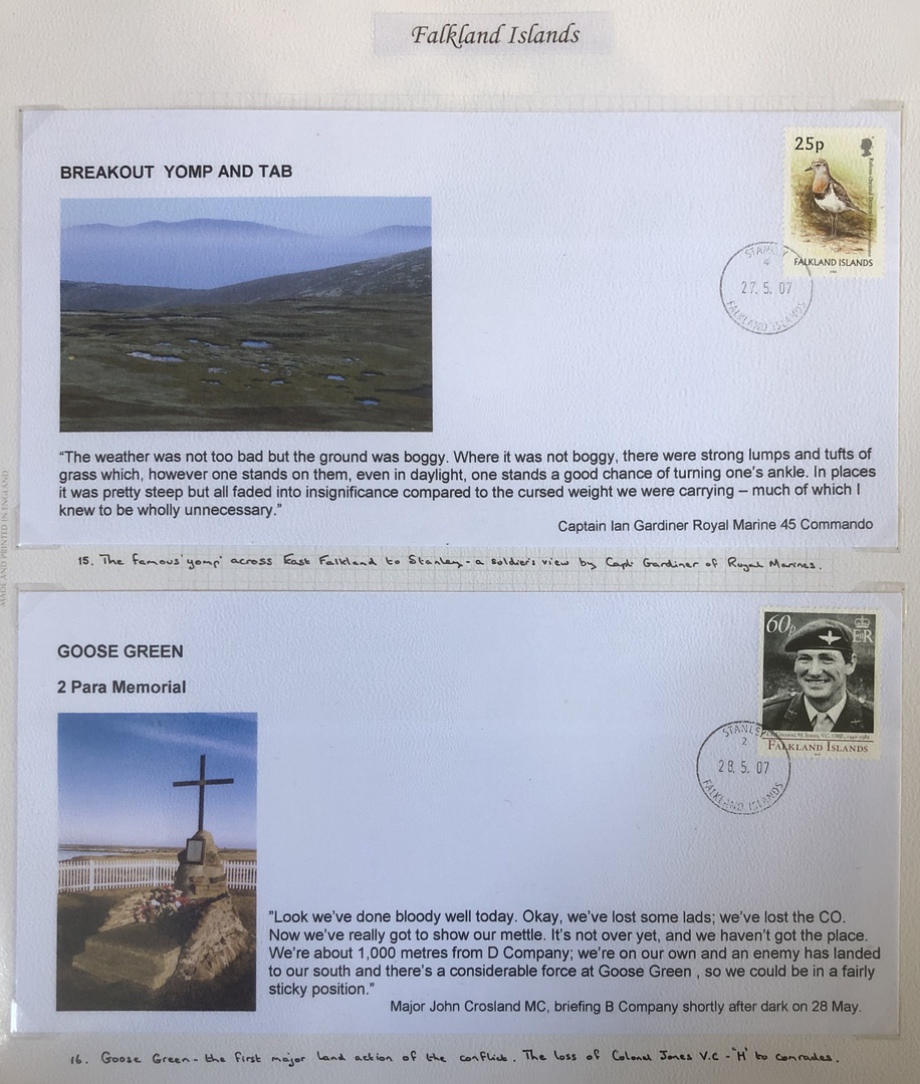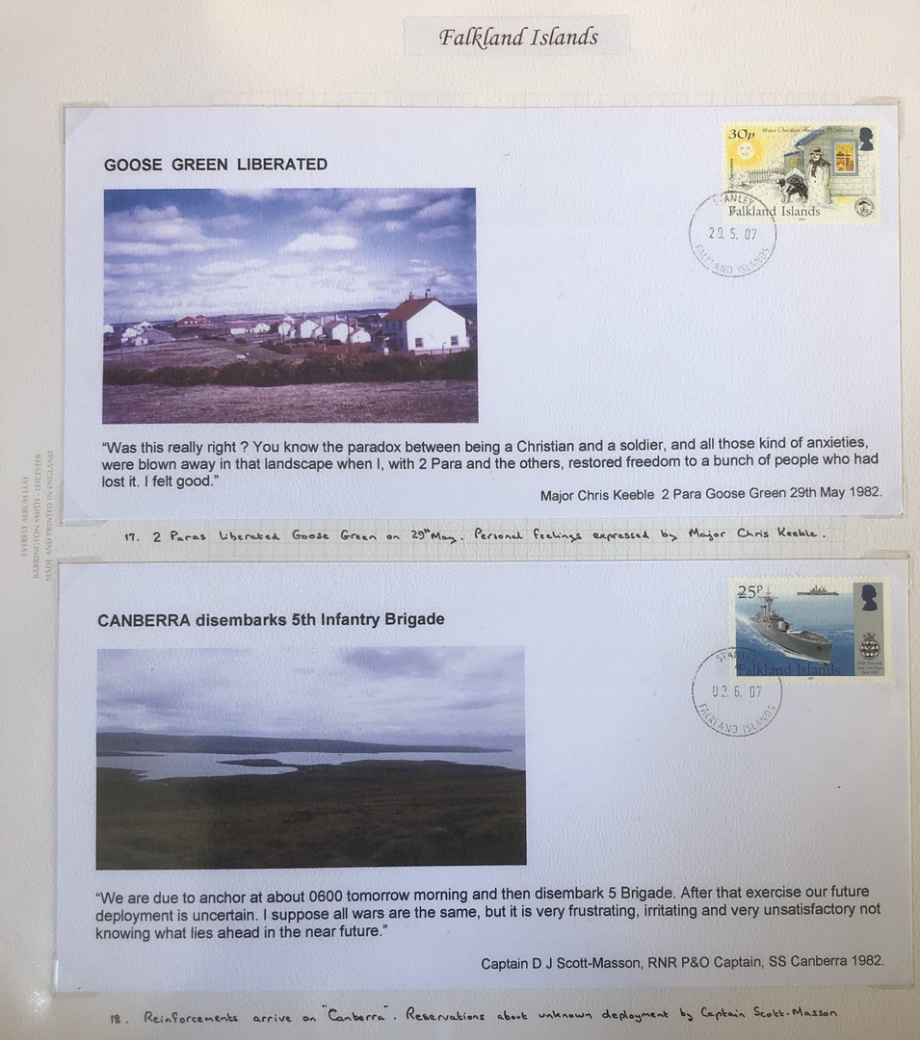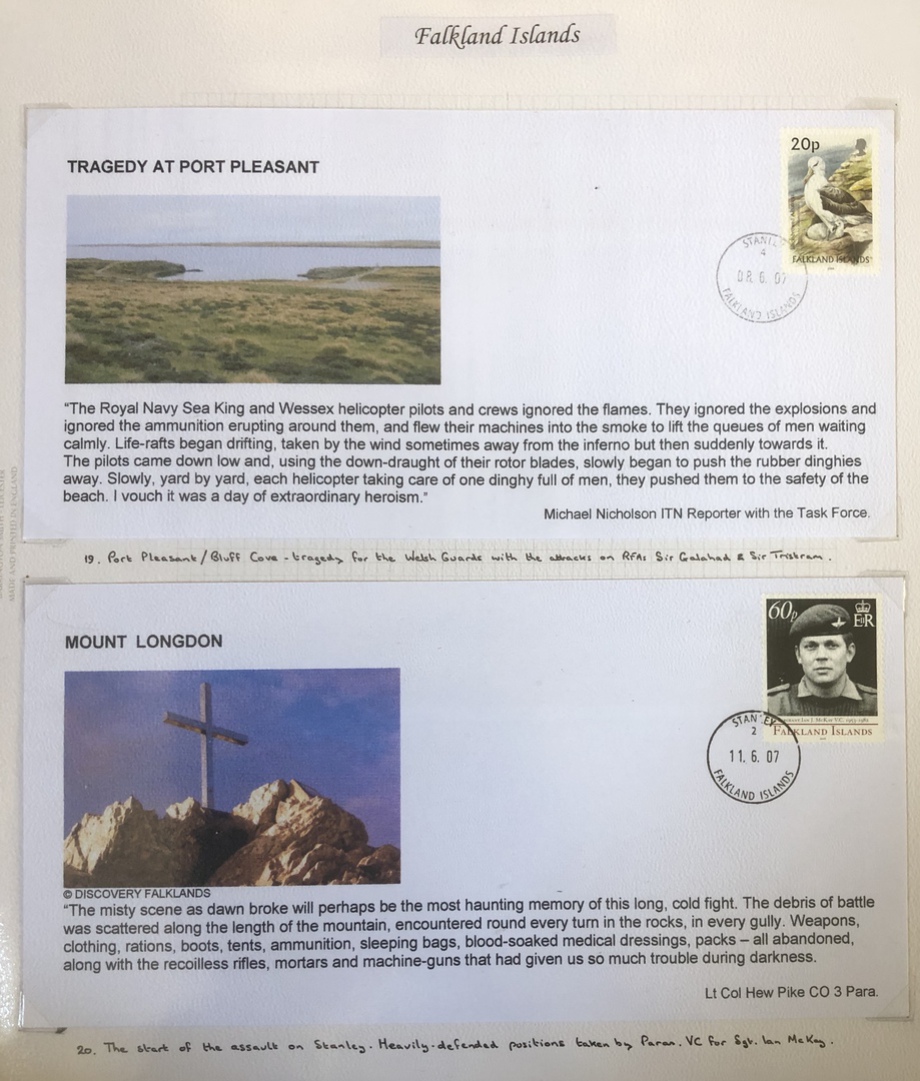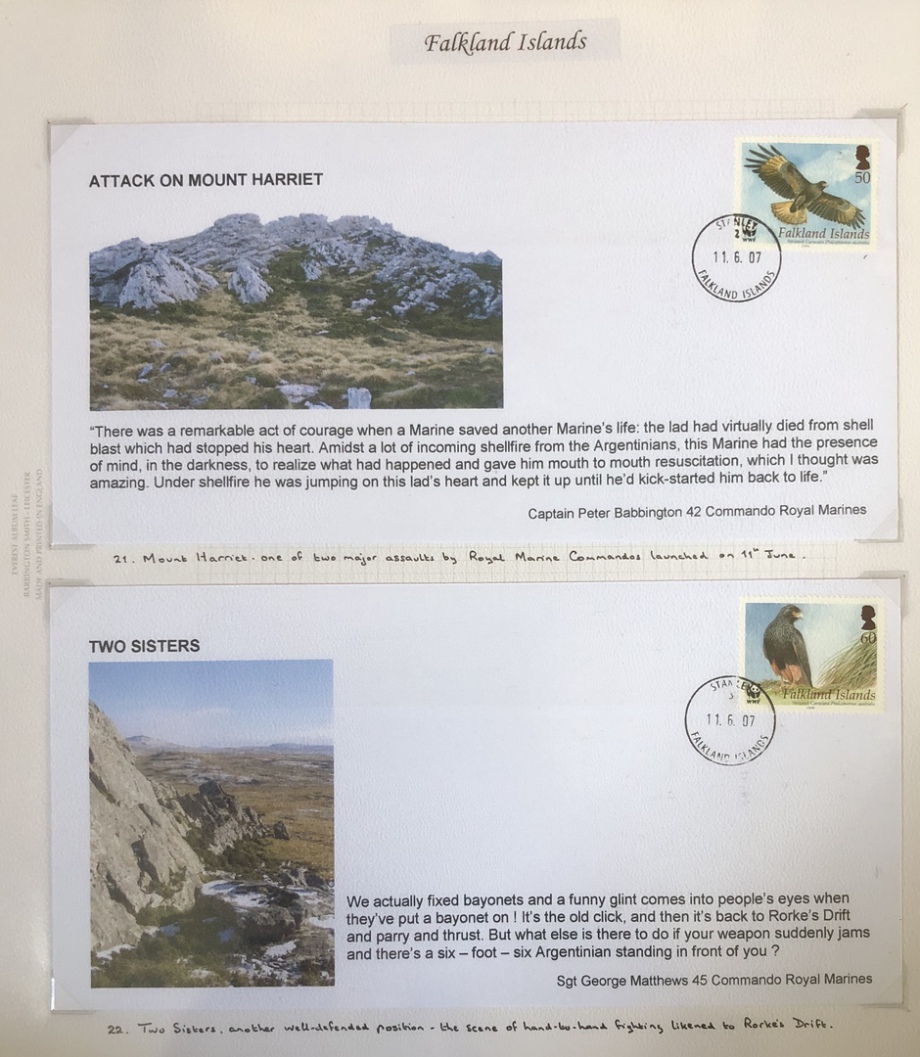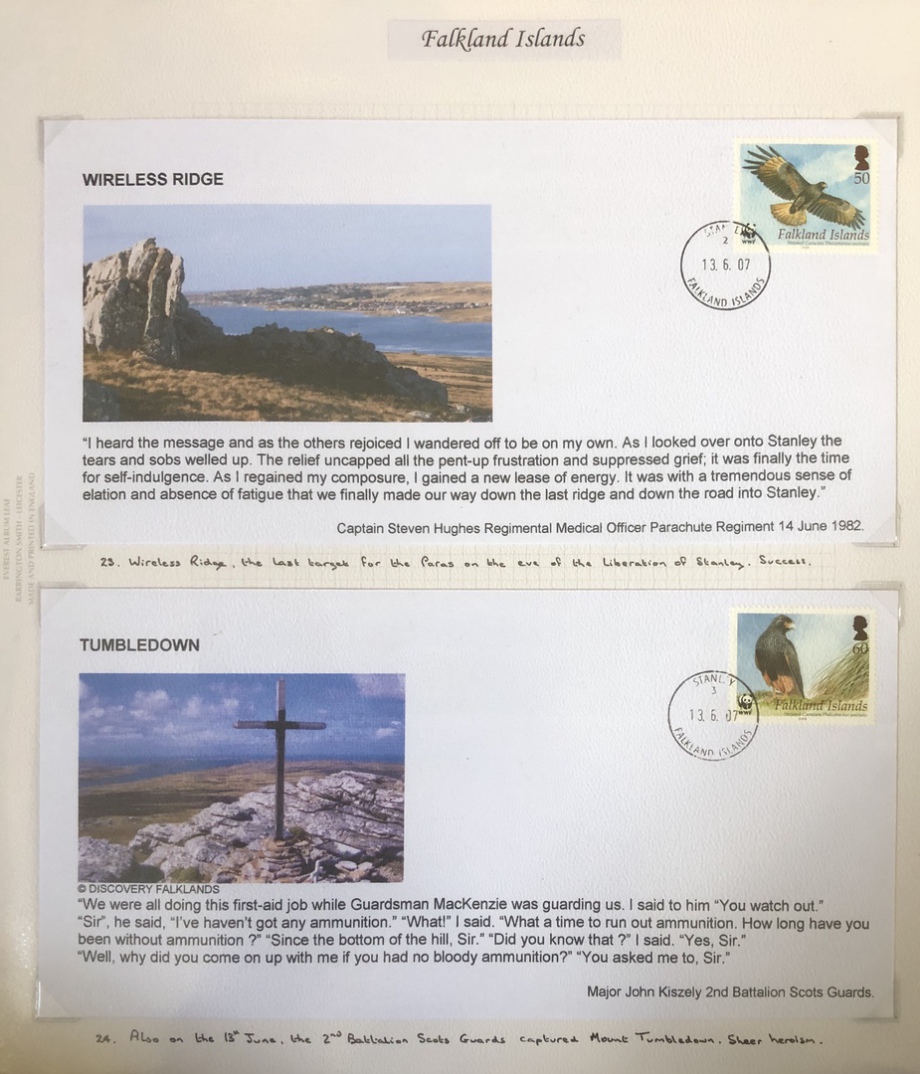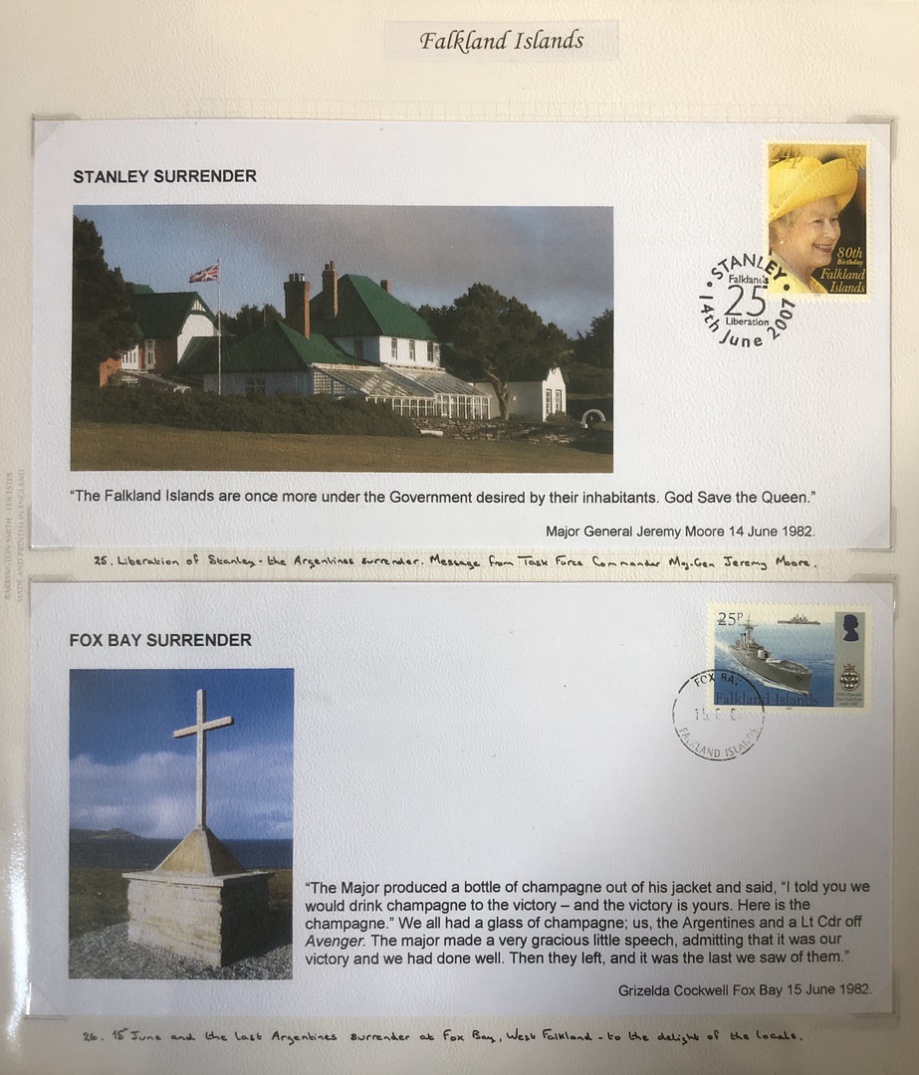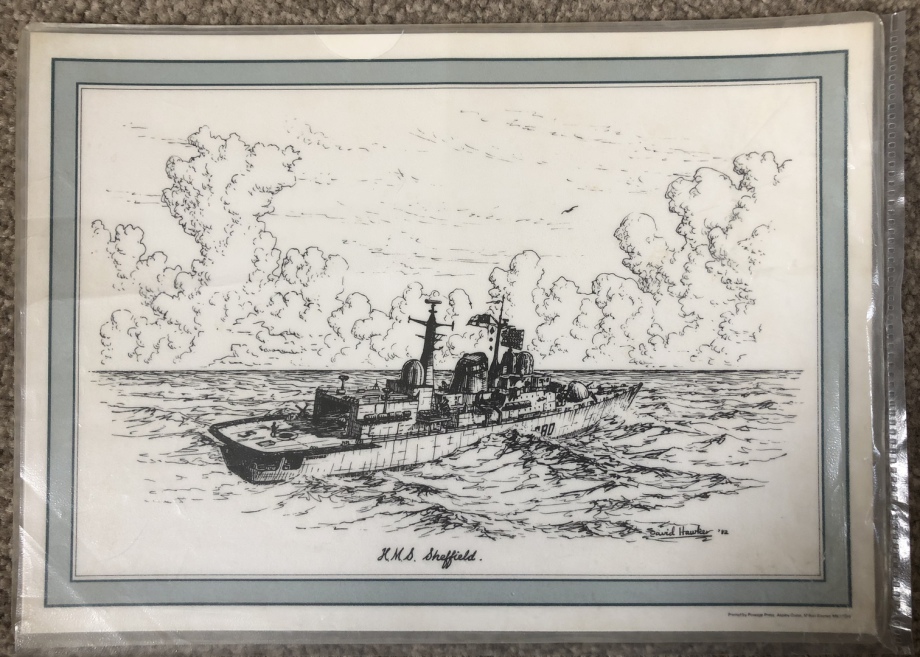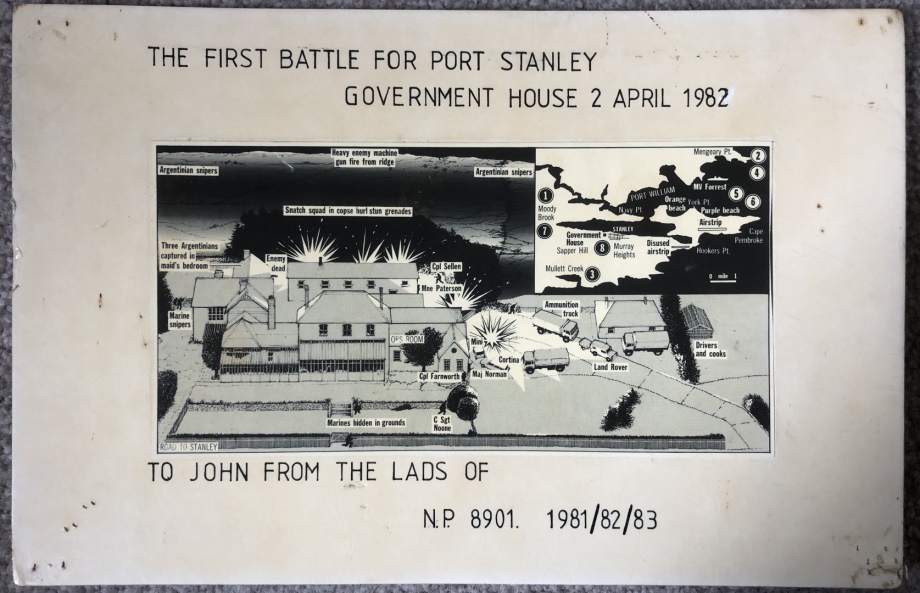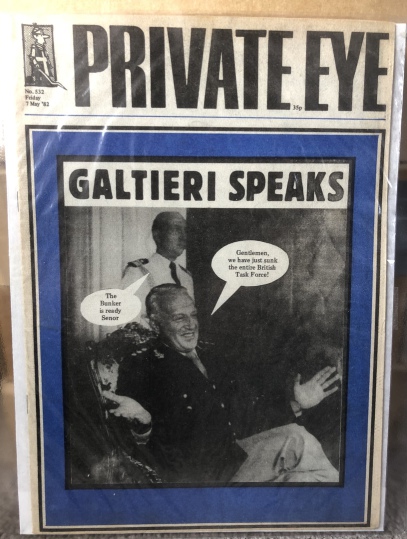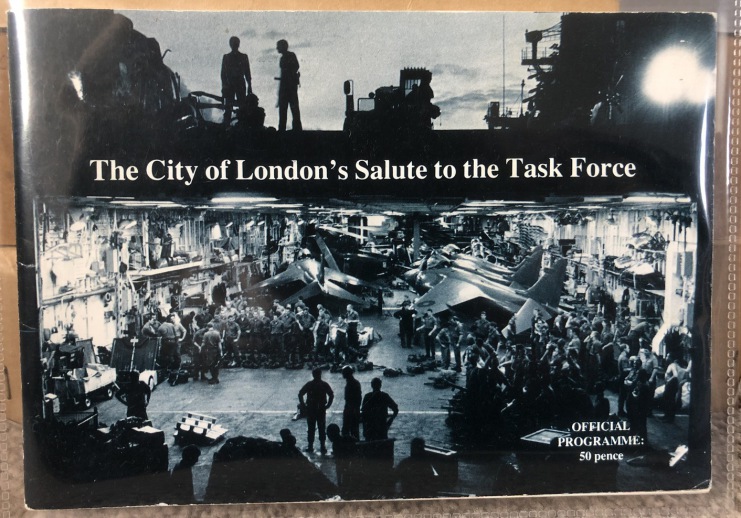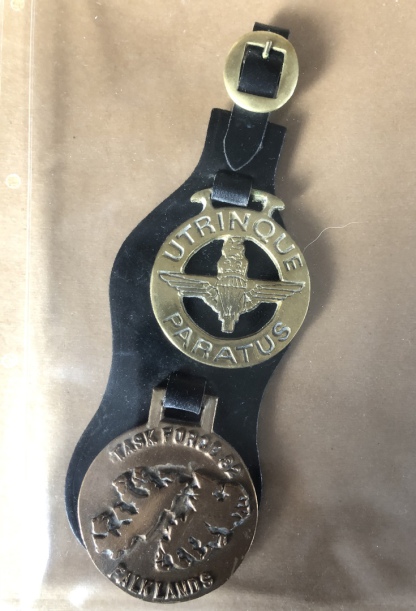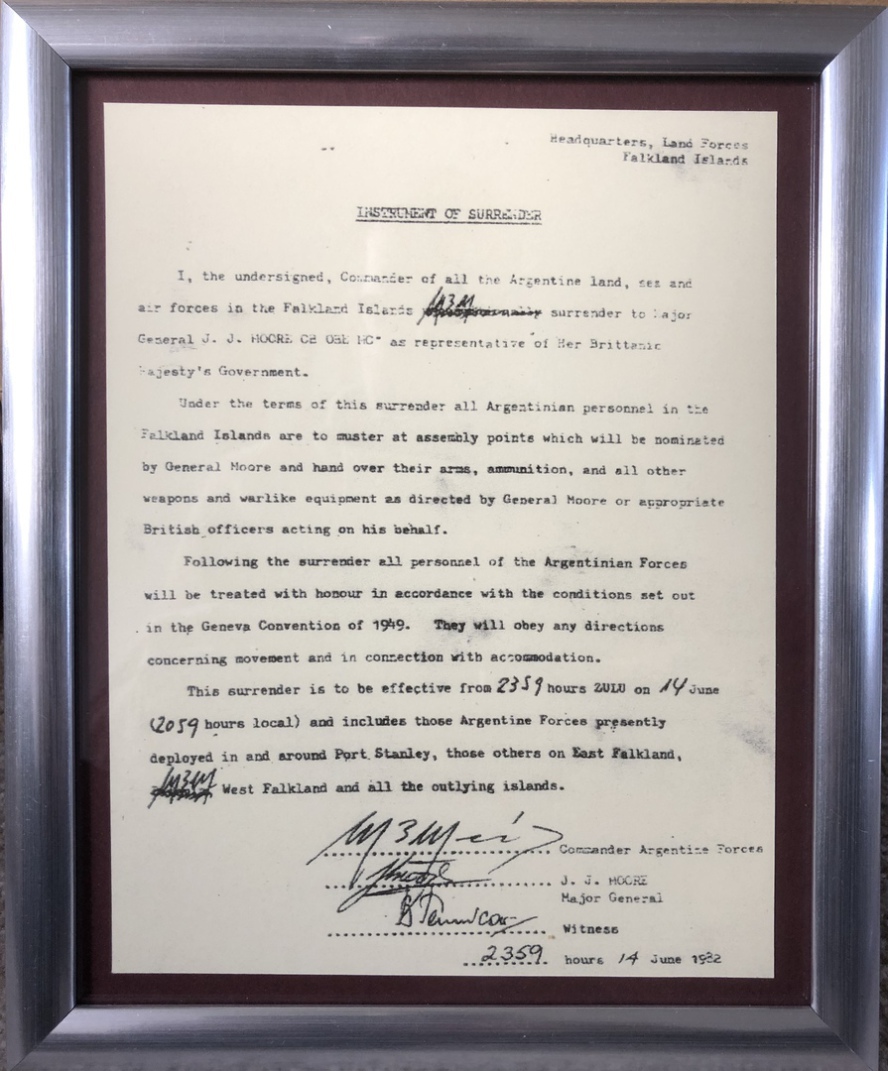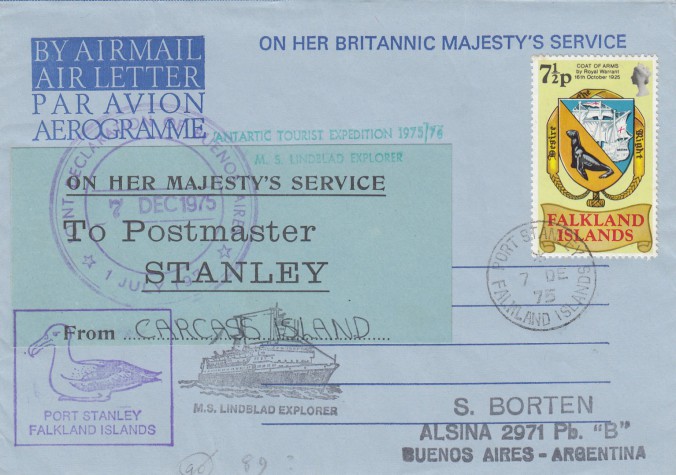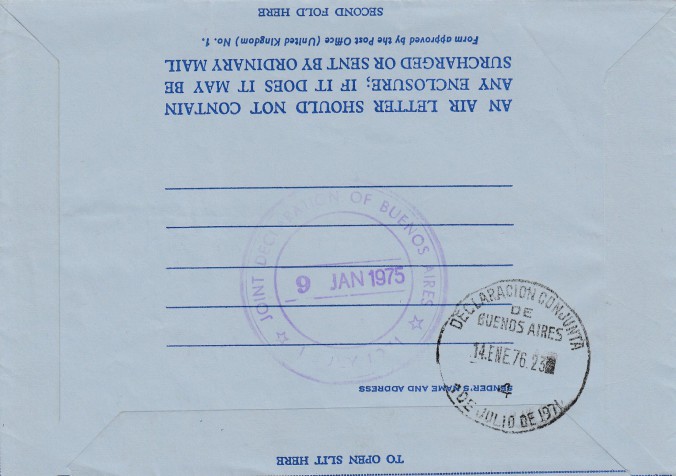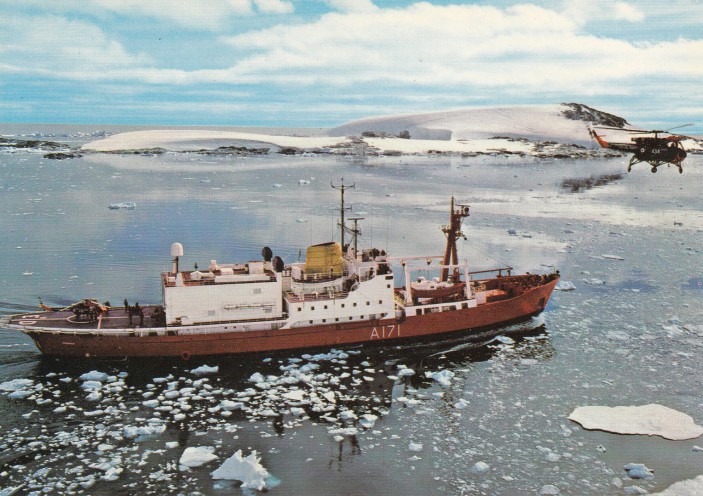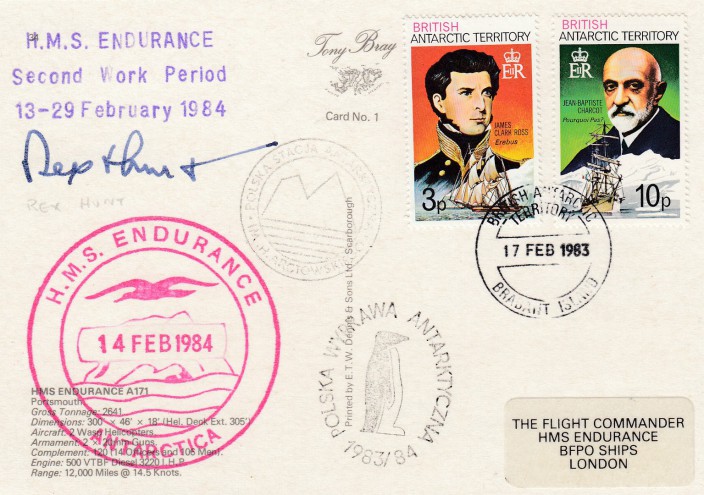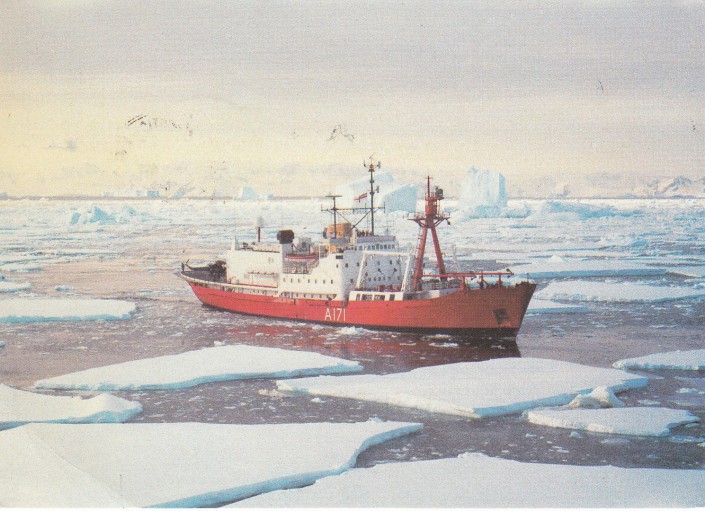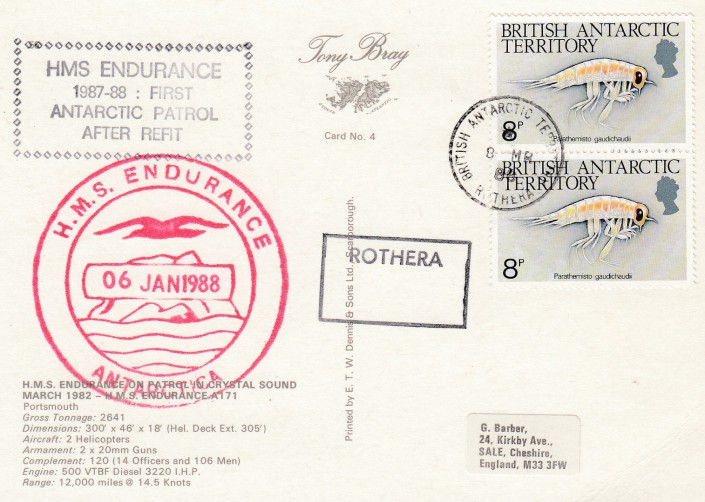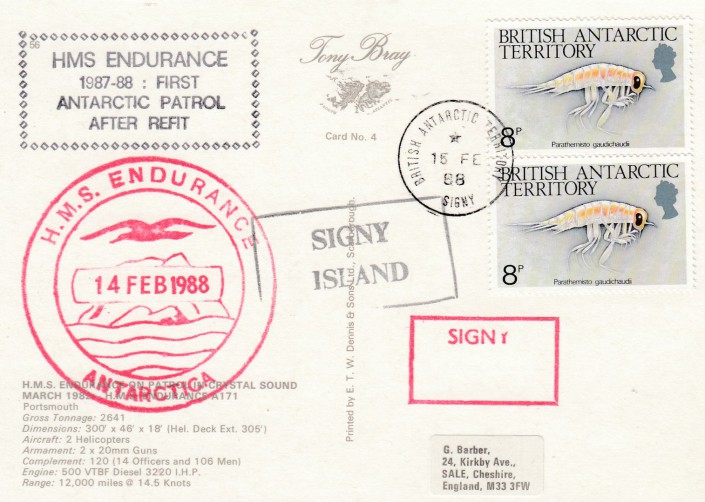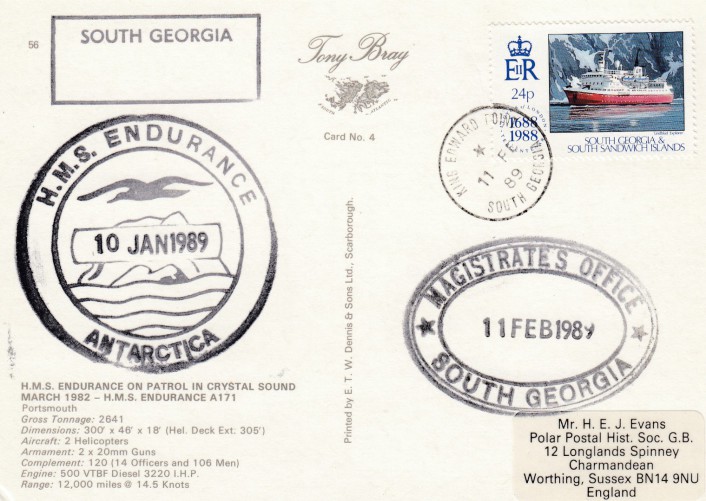The above sheet contains a strip of the material used to make the South Atlantic War Medal. This material was used to make the original medals and is still produced to make renewal medals (when originals are lost), and for making facsimile copy medals as encapsulated on two of the covers depicted above.
That ends what is my mounted display as given when I visit clubs and other organisations. I use this original Medal Group (these are not copies but the original medals as awarded to the Able Seaman) to end my display, no matter how many sheets a club requires for its display, because I think this is a fitting end (especially as this medal group is one of the most valuable items in my entire collection).
The material depicted below is all extra mounted sheets which I place out for viewing. This just gives people something else to look at and enlages the collection. The first set of sheets, a full cover collection, I obtained when I bought someones Falklands Collection, which contained this set and a number of other items which I incorporated into my own collection. These are as mounted by the previous owner as I have not bothered to re-mount these.
MISCELLANEOUS ITEMS
These are the items which I either could not fit into the display (as depicted above) or which I have more recently acquired. Clearly, with a theme like the Falklands War new stuff comes to light all the time, and I am always searching.
Besides the obvious items which directly mention the Falklands War, or depict an image from the war, I also look for the following:
1) Pre war propaganda, mainly Argentinian. This includes the ‘Joint Declaration of 1971’ cachets (many of which do appear in the mounted display, but I have bought other examples since)
2) Philatelic items related to ship visits to the Falkland Islands in the two decades before the war, mainly Argentinian or tourist cruise ship items with Falkland Island cachets.
3) Items related to the ships of the 1982 Task Force, both pre-war and post war – if it is one of the ships involved in the conflict then items from any period are worth including. This especially relates to military/naval shipping deployed after the war and through to the end of 1983 when the item is posted by military people serving on board these vessels.
4) Autographed philatelic covers, when signed by people involved in the Falklands War but when the cover does not directly relate to the war, especially people like Rex Hunt and Margaret Thatcher, but also military personnel.
5) Items depicting the Vulcan Bomber and the Harrier Jump Jet, as these two aeroplanes are indicative of the war
6) All philatelic items used with the HMS Endurance cachet – this ship was a major part of the Falklands War story and was involved with the islands for many years before and after the war.
All the below items fit into one of these categories.
N.P 8901 stands for 'Naval Party 8901' with 8901 being the number allocated to the forces manning the Falkland Islands. This hand made board was made as a gift to someone called 'John'. It is an unusual and unique item. I have tried to discover who 'John' is but without any luck so far. When I saw this item I knew I had to have it to go with my collection and display.
Facsimile of the Surrender document signed by the Argentine forces in Port Stanley at the end of the Falklands fighting.

